Welcome to my blog, in which I post photos from recent travels and photography ideas.
These are posted irregularly, so log in at your leisure to catch my latest ramblings.
January 7 - Headingley, Manitoba
This morning's temperature in Thunder Bay registered -28C - not pleasant.
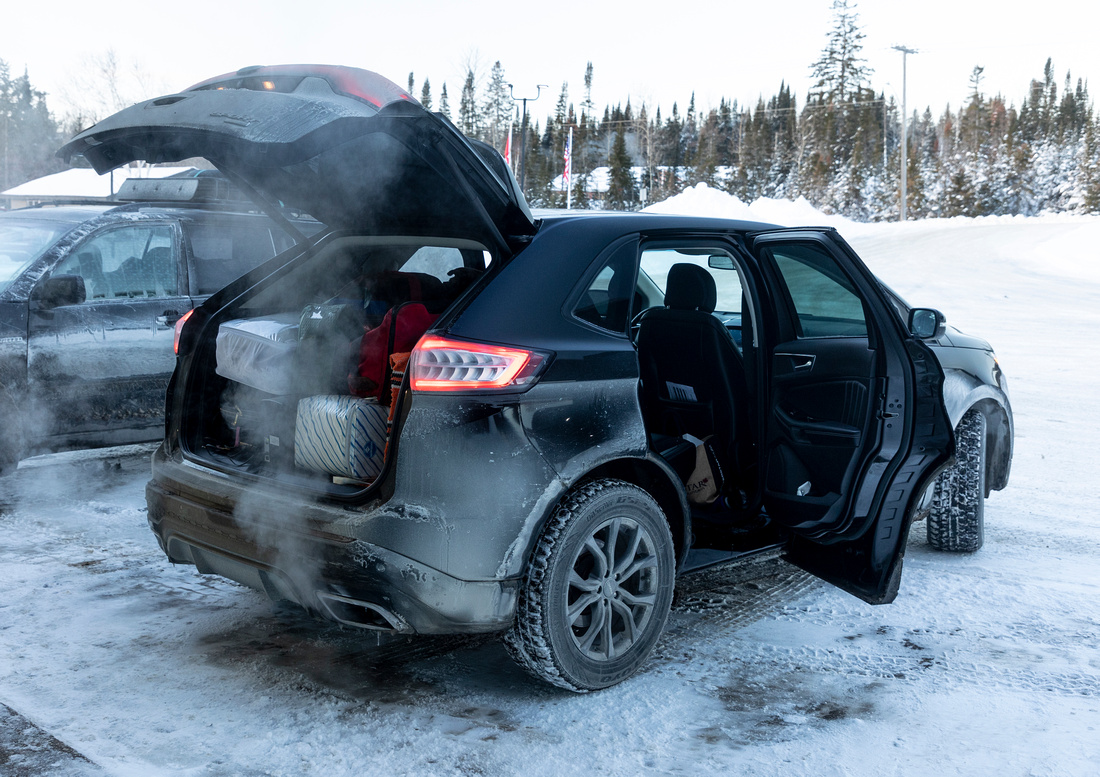
 This is our loaded not-so-clean vehicle as we are about to depart.
This is our loaded not-so-clean vehicle as we are about to depart.
The day was sunny and bright with a light wind that still made it seem so much colder.
The roads were bare and dry all day, which made for excellent driving.
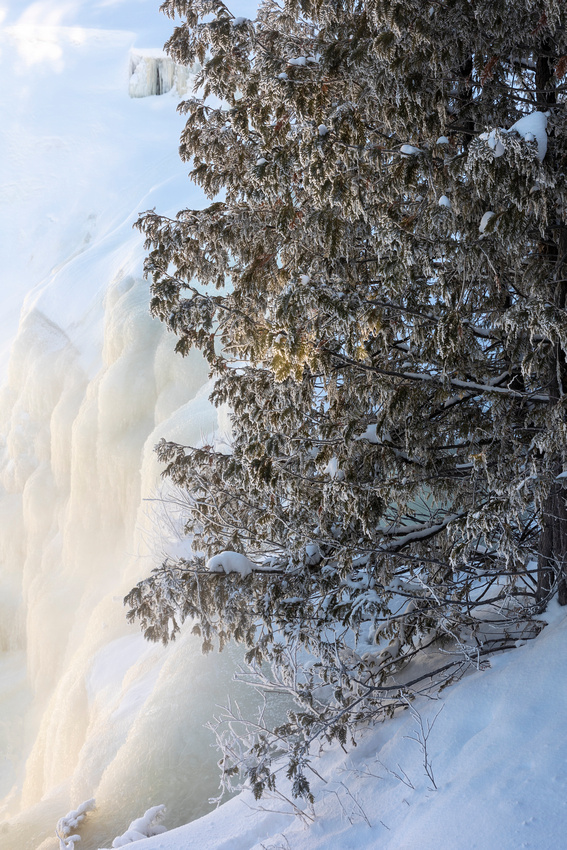

We pulled into the parking area of Kakabeka Falls for a quick look. The waterfall was completely frozen over. It was difficult to see any flowing water and also hard to get any meaningful photos from the boardwalk. This is the most interesting one.
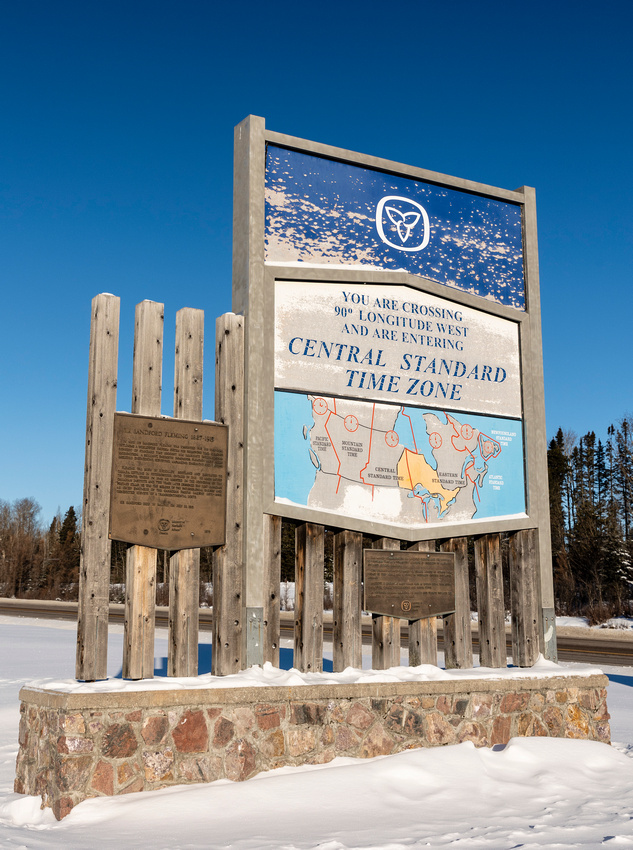

These plaques are just east of Upsala along Highway 17.
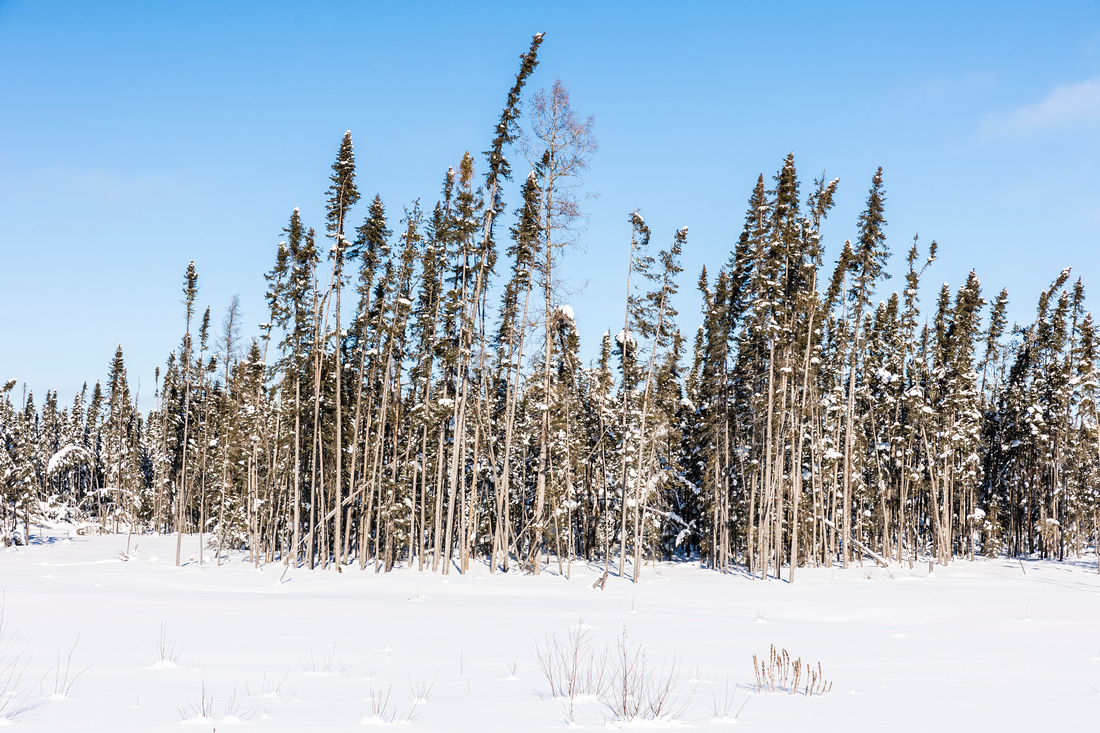
 I've usually found the drive from Thunder Bay to Dryden very uninspiring, actually boring boreal forests. But today was much different. With the bright blue skies and snow on the conifers, I found it to be quite beautiful.
I've usually found the drive from Thunder Bay to Dryden very uninspiring, actually boring boreal forests. But today was much different. With the bright blue skies and snow on the conifers, I found it to be quite beautiful.
Never thought that I'd enjoy this section of the drive. This photo was taken near Ignace.
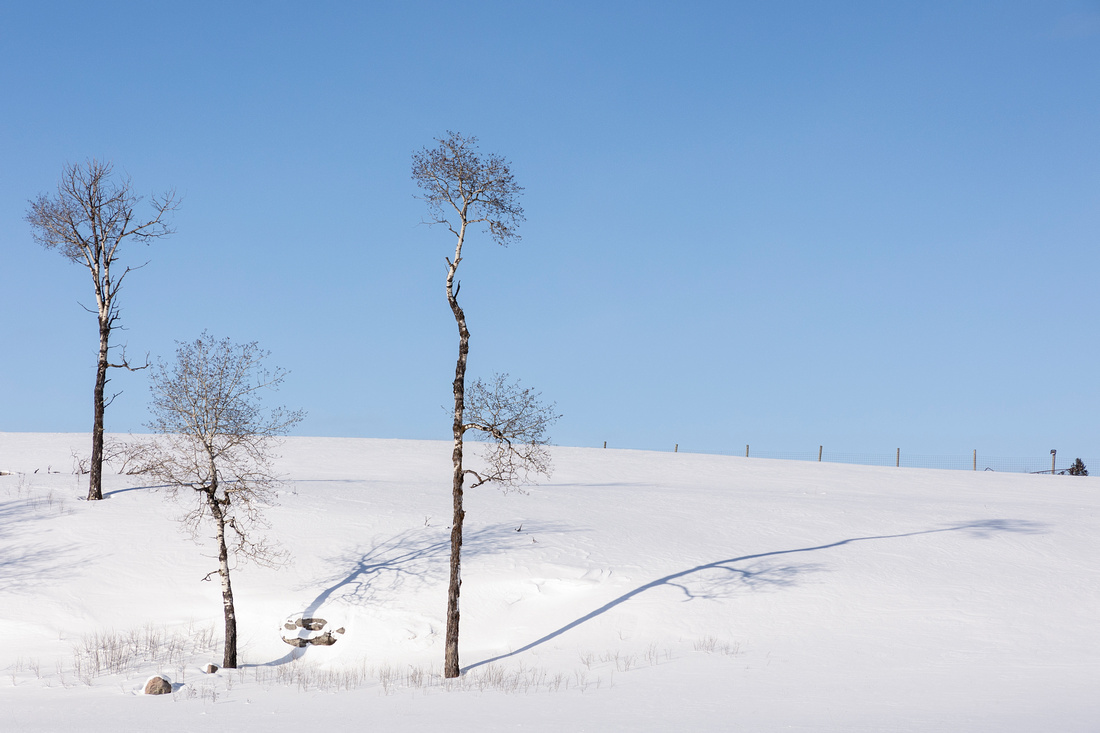
 These trees I photographed at Oxdrift. Everyone surely knows where Oxdrift is.
These trees I photographed at Oxdrift. Everyone surely knows where Oxdrift is.
There is a large expanse of farm fields west of Dryden, and this is just one of those areas.
The road approaching Kenora is very winding because there are numerous lakes. But I have no photos from here. The highway here had a lot of truck traffic. That along with the cold discouraged my taking photos here.
We are just west of Winnipeg for tonight.
January 6 - Thunder Bay
We left on our voyage to Vernon late Tuesday as we intended to go only as far as Blind River.
It was a reasonably mild day, -2C. Enjoy it while it lasts!
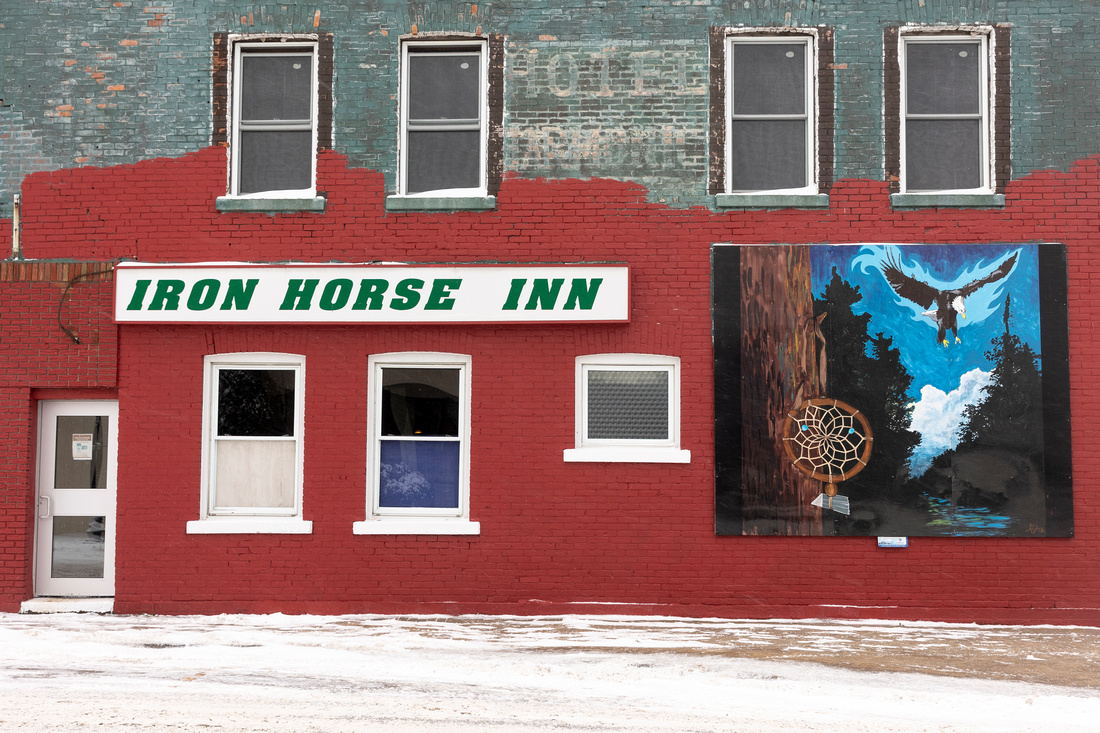
 We spent two nights with our long-time friends, Claudette and Bob Gallagher.
We spent two nights with our long-time friends, Claudette and Bob Gallagher.
Good friends, good company, good food, good wines, and a great card game (guess who won).
So we left early this morning knowing that this would be a long day's drive.
It was overcast until just north of Sault Ste. Marie, where the sunshine broke out, helping to alleviate the minus 18C temperature, which remained consistent throughout the day.
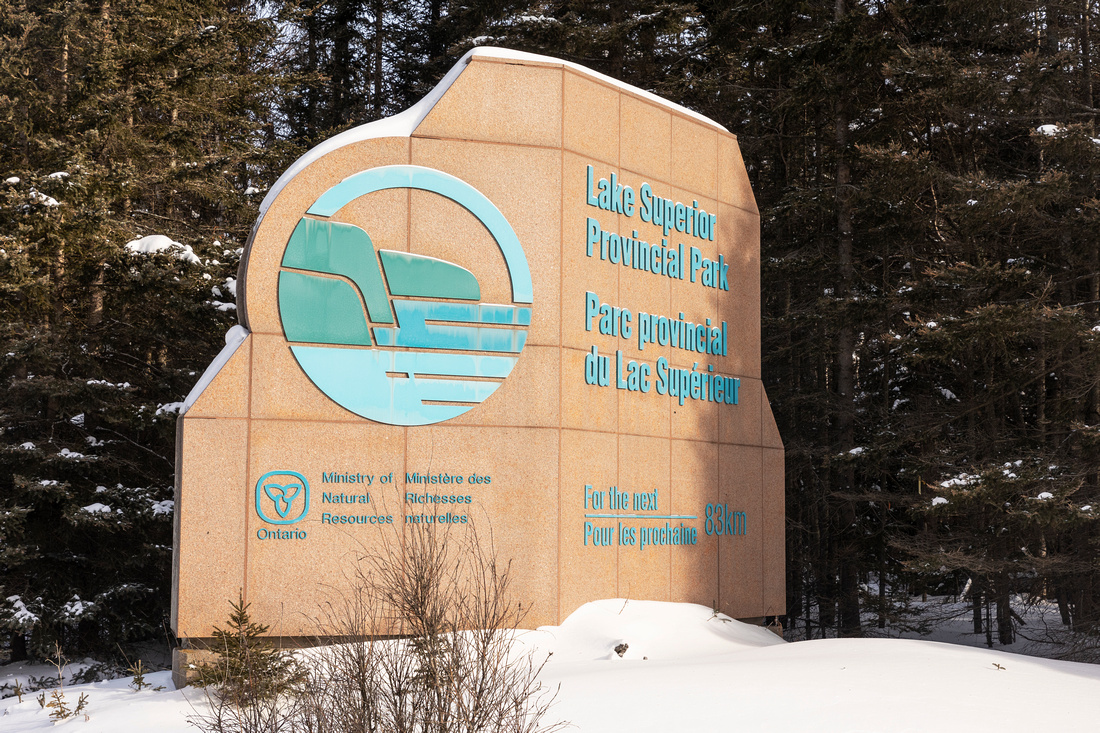
 From here on it is a very scenic drive, often with views over Lake Superior, which had little ice.
From here on it is a very scenic drive, often with views over Lake Superior, which had little ice.
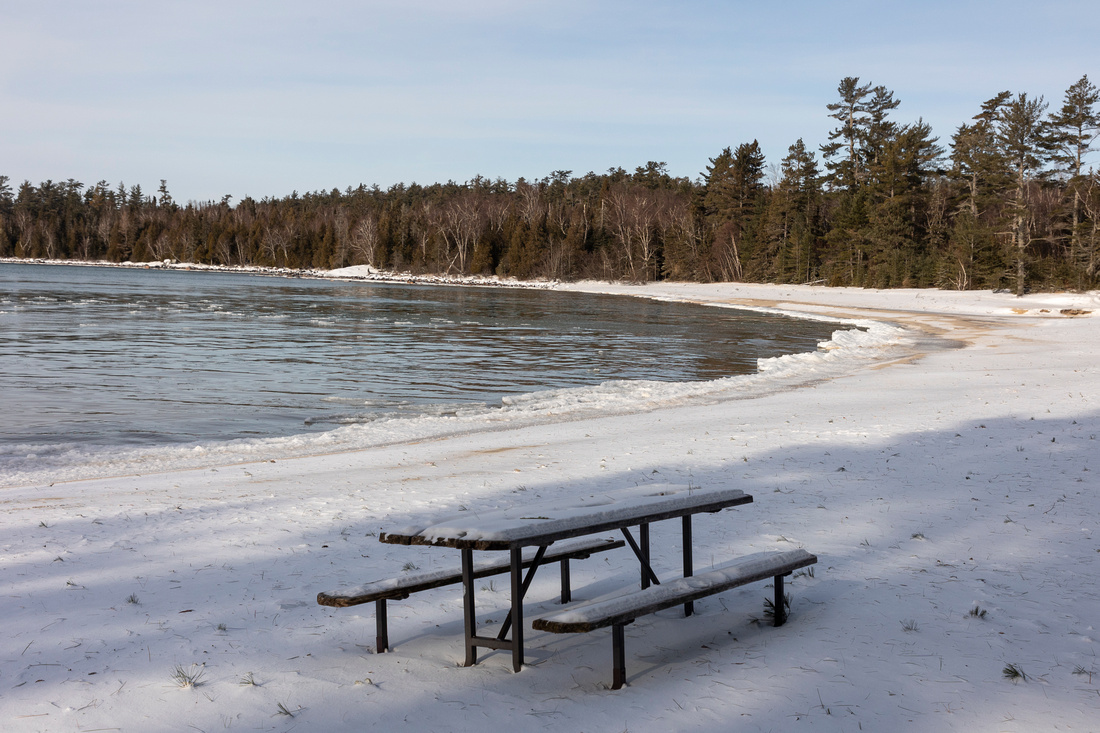
 But it was no picnic
But it was no picnic
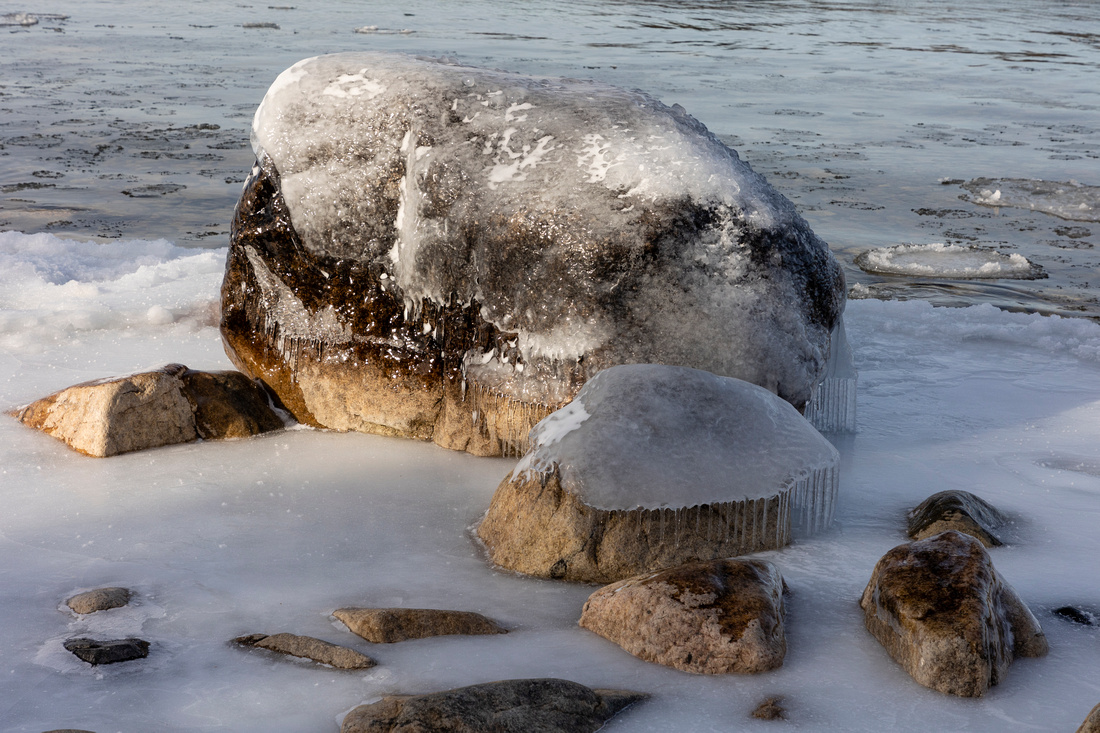
 These ice-coated rocks are at Katherine Cove.
These ice-coated rocks are at Katherine Cove.
Next we carried on past Wawa, gassed up at White River ($1.60.9 per litre), by Marathon, and then a short stretch at Terrace Bay.
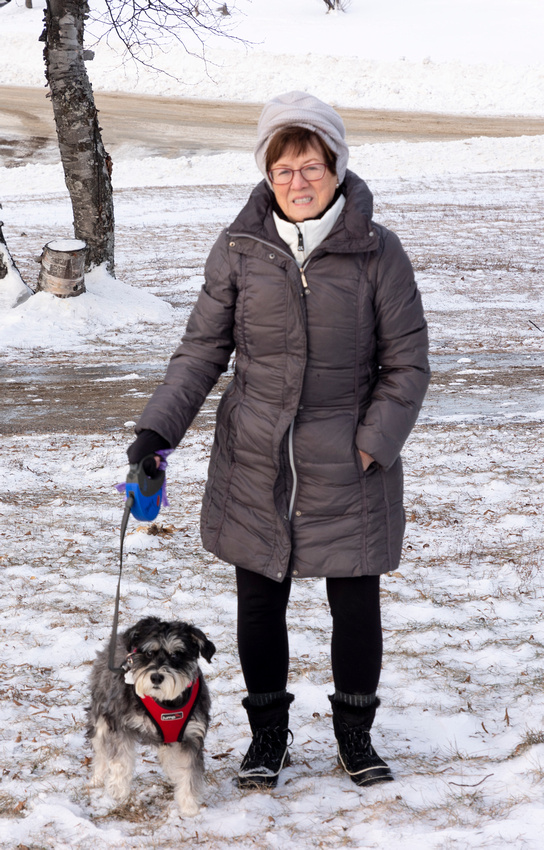

We had many views of a nice sunset over Lake Superior, like this at Rossport.
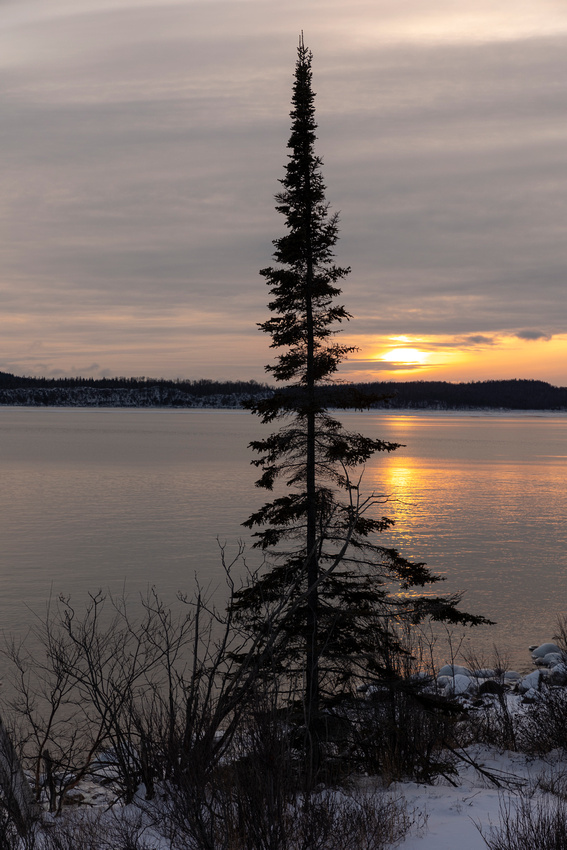

I wish I could have stopped more often, but it was still a long way to Thunder Bay.
We passed through Schreiber and Nipigon, when darkness descended.
We arrived at the hotel at 7:00. At this time of year we have to unload a lot of our luggage and food. It is much too cold to leave many of these items, especially food and wine, in the car for the night. So this becomes a daily routine: unload at night and repack in the morning.
So after our dinner of veal marsala (cooked in the car as we drove) and a bottle of wine, it is time to say good night.
January 3 - Happy New Year
My blog is coming back. I apologize for this long hiatus, but I do plan to resume.
We hope that you had a great Christmas. Santa did drop into our house with a stash of gifts and great food and wines.


Now that these Christmas celebrations are over (whatever celebrations we all were able to have because of this on-going Covid) we will shortly be starting our drive to British Columbia - Vernon, to be specific - and skiing at Silver Star Mountain. It will be good to get back on the slopes after missing last winter. The milder Okanagan weather will also be something to look forward to.
As we travel west, all through Canada, I will blog daily on our progress and adventures, beginning later this week.
Hope that you can follow us on this journey.
Happy New Year.
September 30 - Photographing Fall Colour
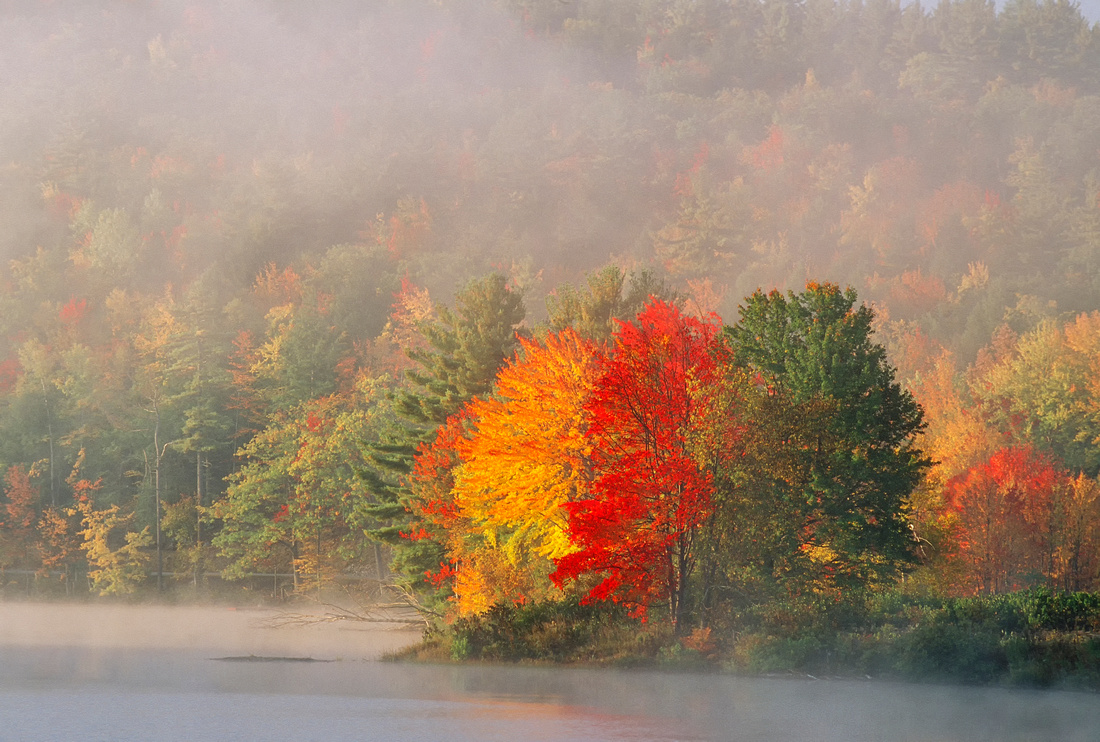
 Spectacular colour with atmospheric conditions as in this photo of Crystal Lake in New Hampshire's White Mountains is the exception, not the norm.
Spectacular colour with atmospheric conditions as in this photo of Crystal Lake in New Hampshire's White Mountains is the exception, not the norm.
A case in point was last Sunday morning. I arose early hoping to capture a nice autumn sunrise. But I struck out. Those are the vagaries of nature photography. More often than not, nature does not cooperate.
Here in Sudbury, fall colours are only now arriving. After striking out on a sunrise, I drove into a large fog bank to the west, where I spotted this small maple which had lost many of its leaves.
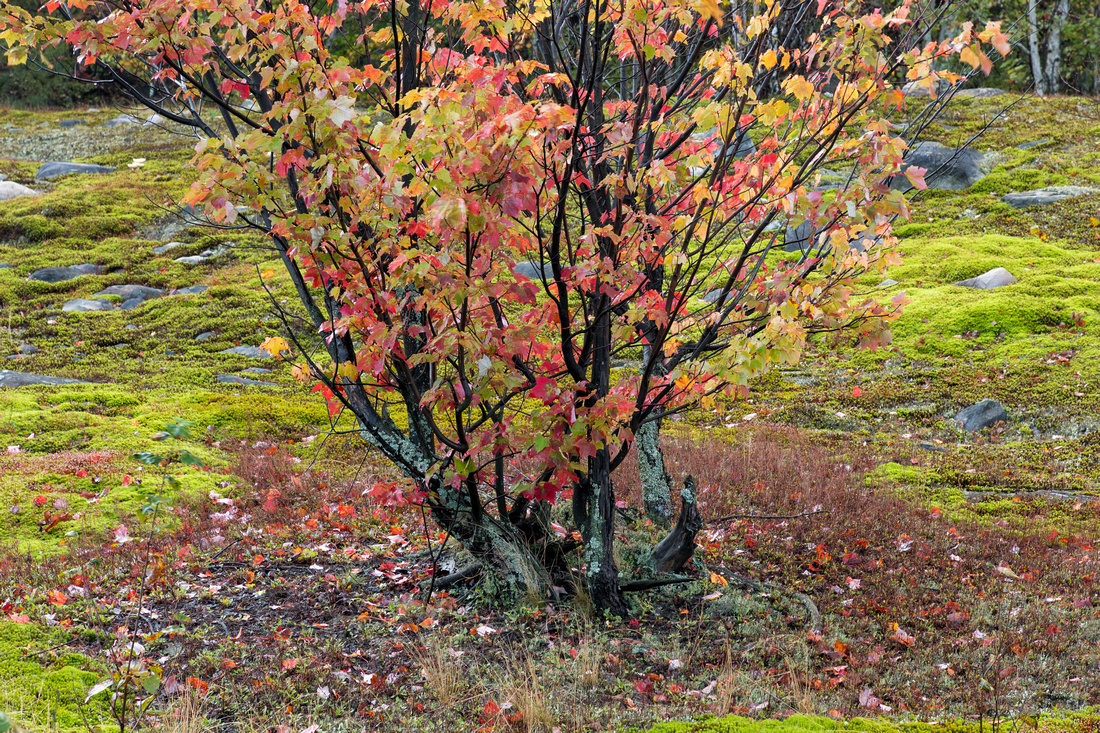
 This was about the best colour I'd seen that morning, so I pulled over to check out the scene.
This was about the best colour I'd seen that morning, so I pulled over to check out the scene.
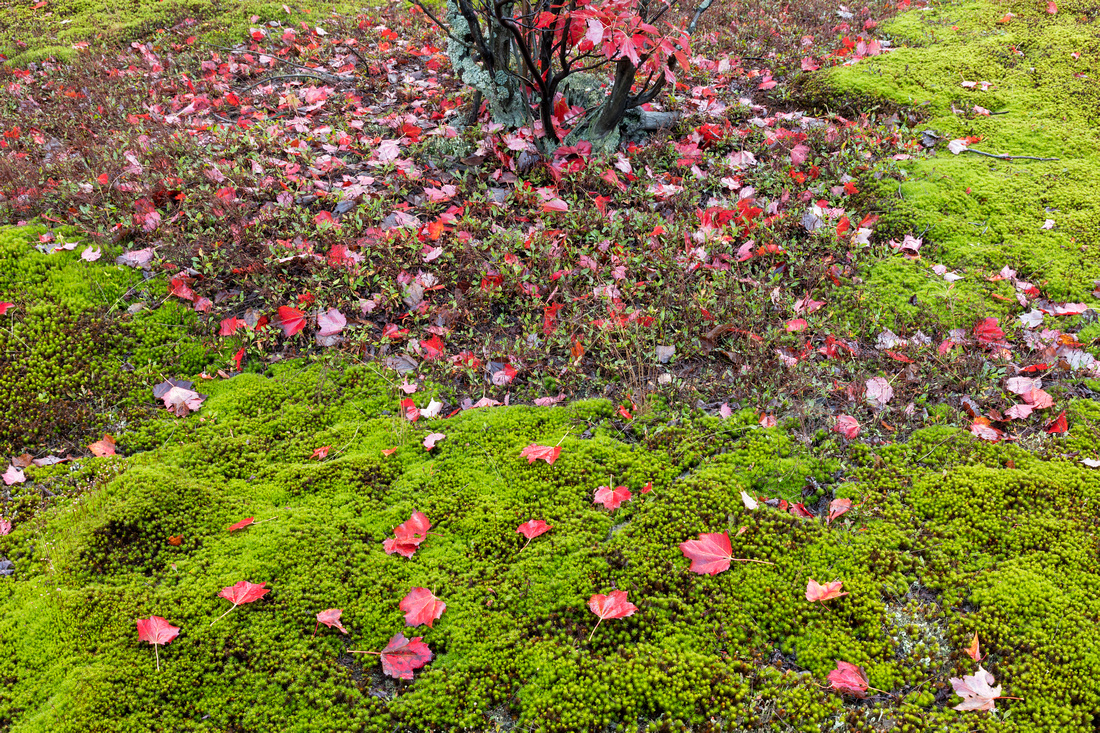
 I worked this setting, taking a variety of images. Here are a few of them.
I worked this setting, taking a variety of images. Here are a few of them.
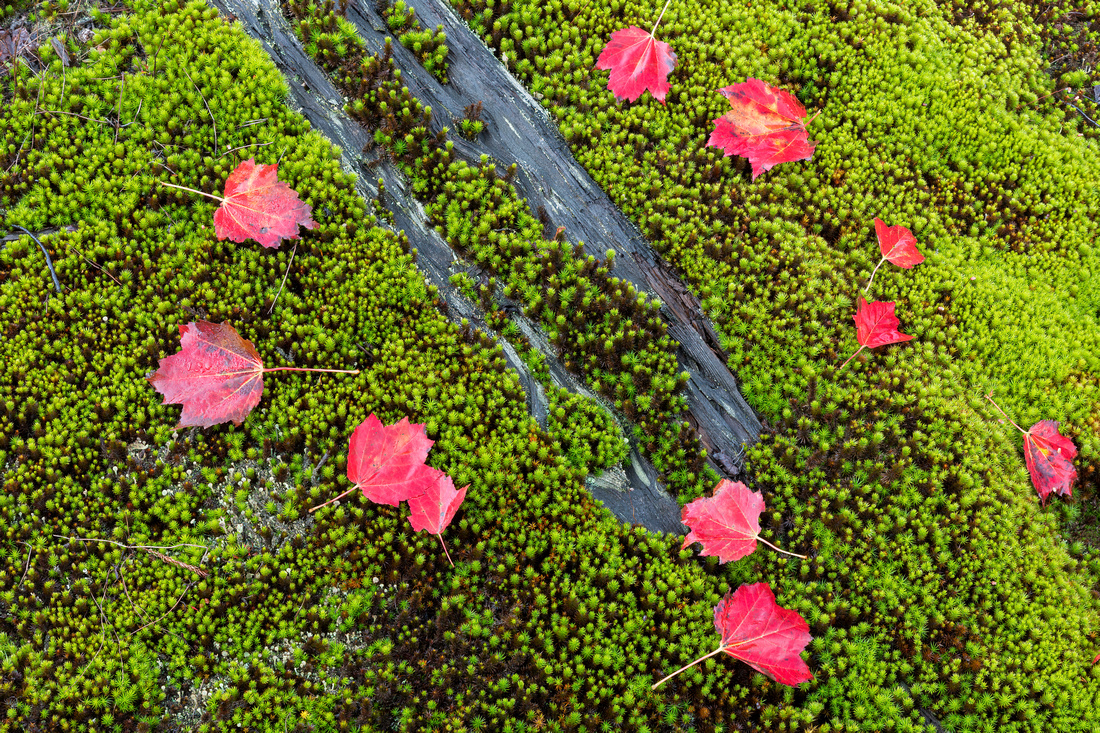

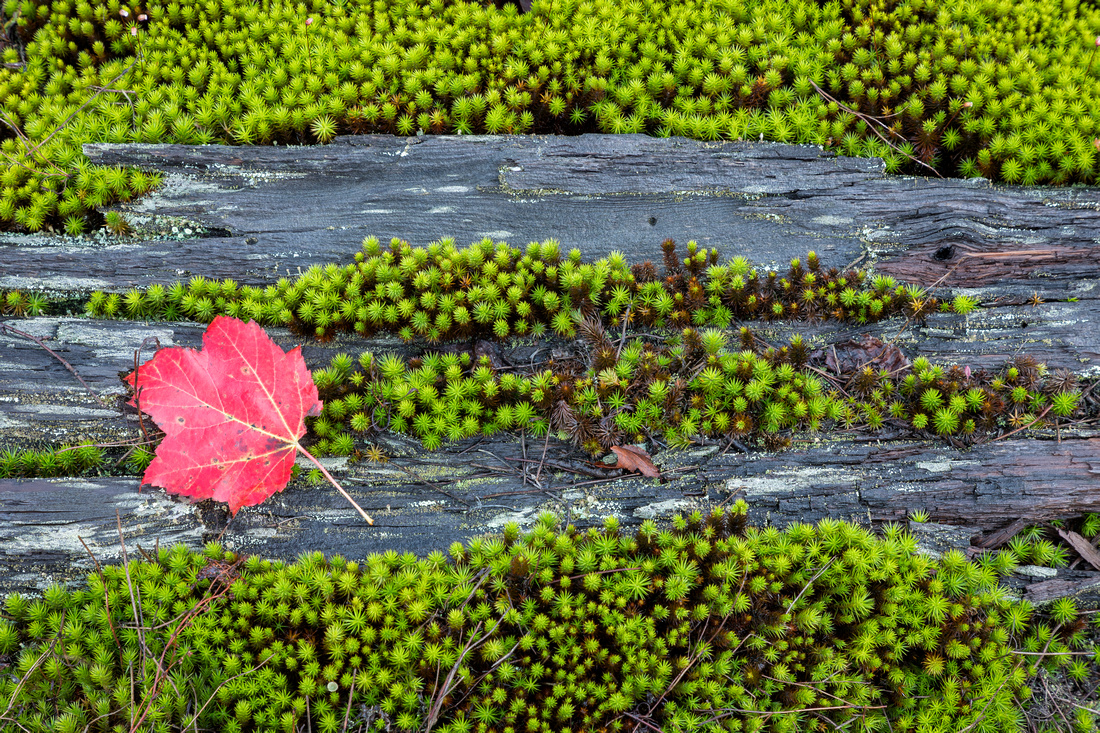

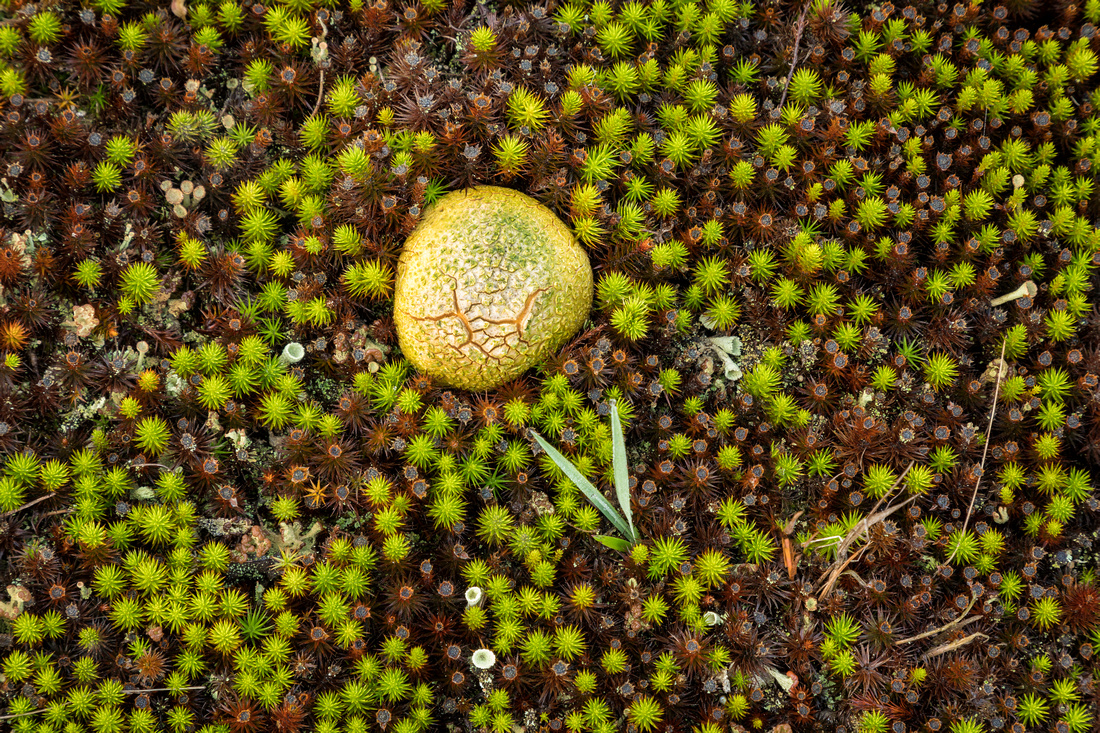
 The lesson here: when you find a good subject, spend time with it. Work the scene.
The lesson here: when you find a good subject, spend time with it. Work the scene.
Here are some examples of autumn photographs.
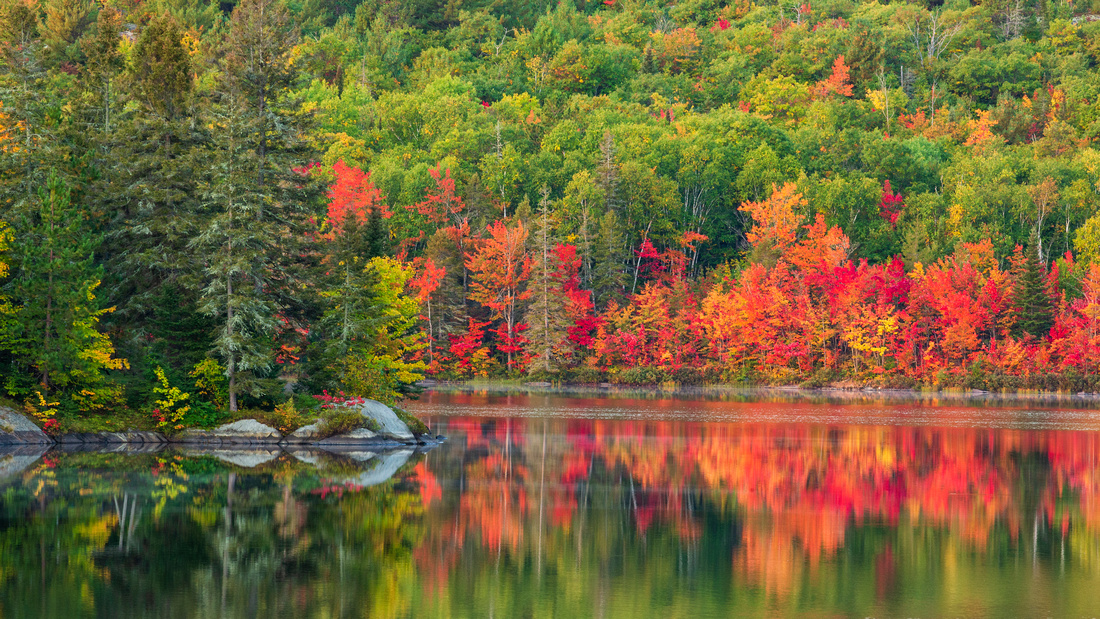
 Look for reflections when the morning is quiet and calm.
Look for reflections when the morning is quiet and calm.
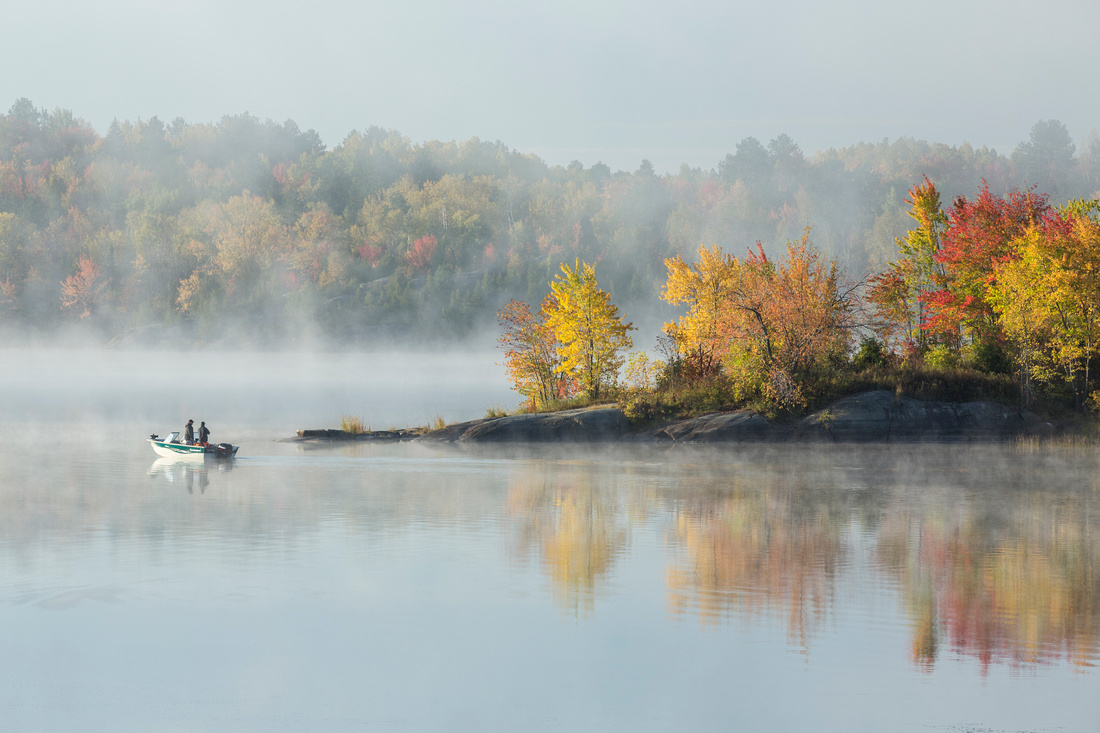
 On autumn mornings you will often find foggy conditions. Here on the Vermilion River the foggy atmosphere also shows reflections on the water.
On autumn mornings you will often find foggy conditions. Here on the Vermilion River the foggy atmosphere also shows reflections on the water.
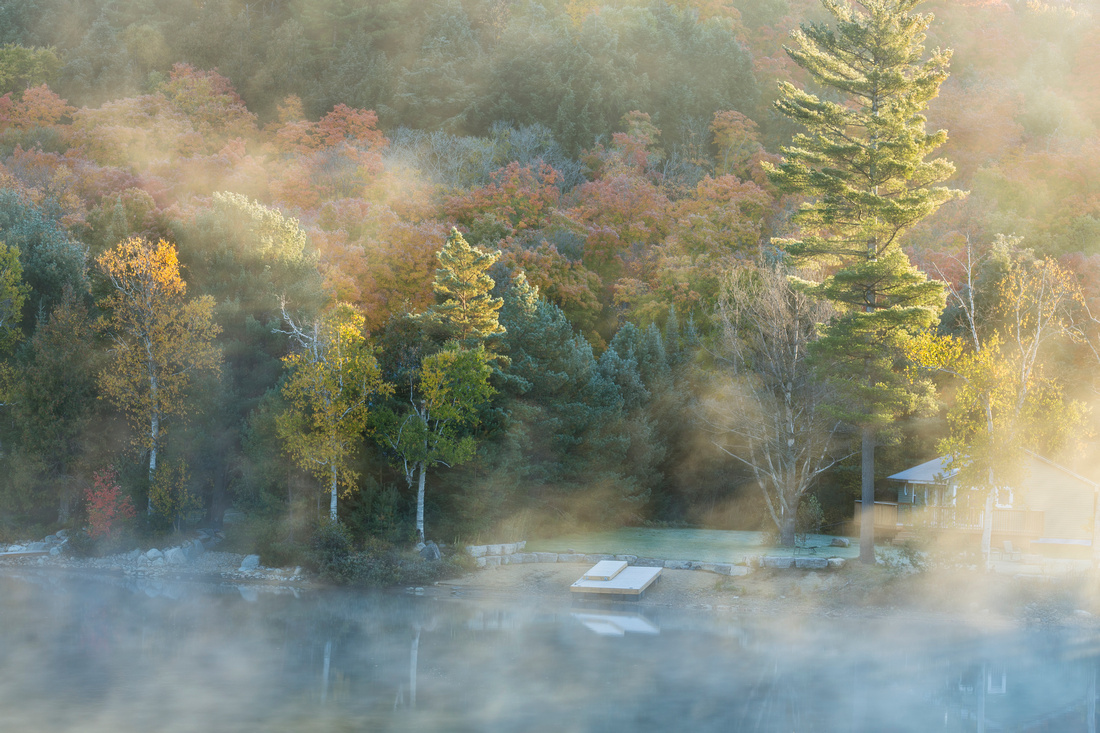
 Here the rising sun sidelights the frosty foggy morning on Oxtongue Lake.
Here the rising sun sidelights the frosty foggy morning on Oxtongue Lake.
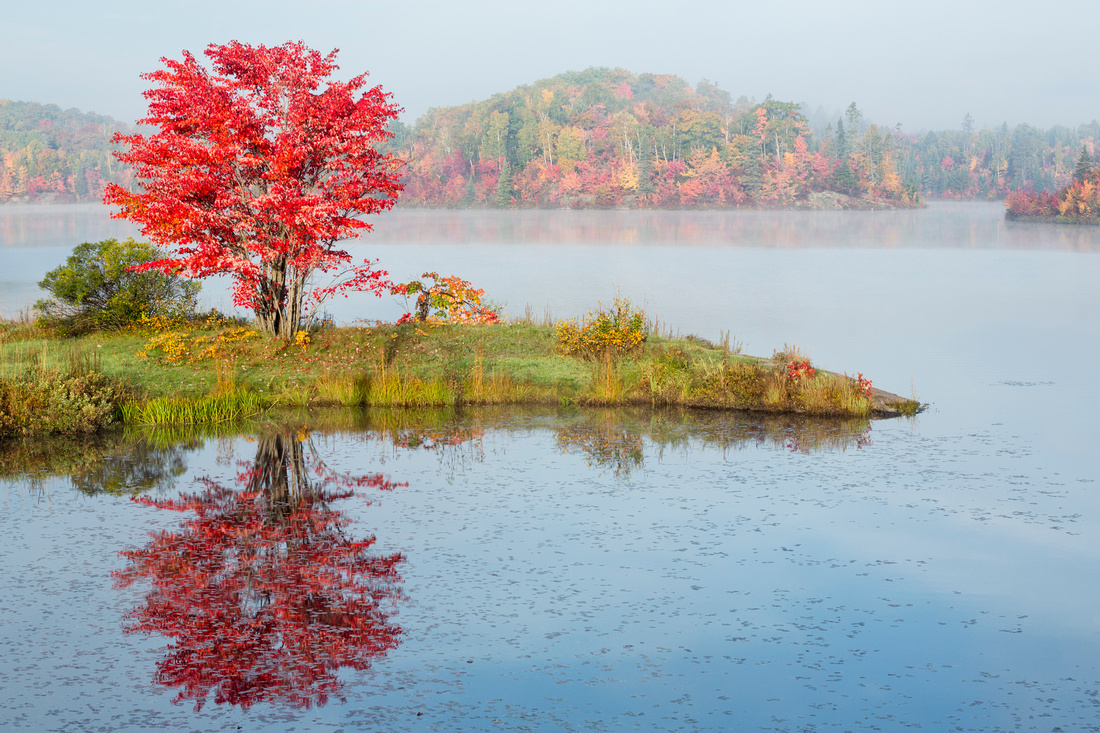
 Front light does not often produce quality images, but the light fog on St. Pothier Lake introduces some atmosphere.
Front light does not often produce quality images, but the light fog on St. Pothier Lake introduces some atmosphere.
The red maple and its reflection as foreground elements add layering and depth to this photo.
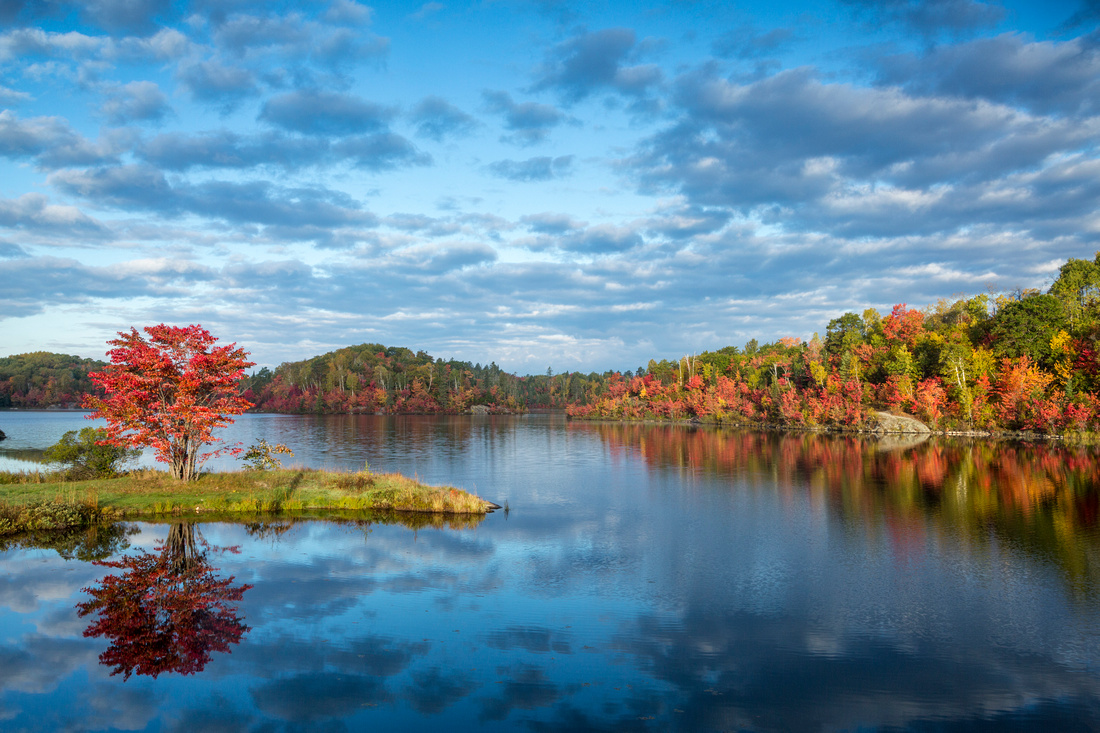
 This is a different composition at the same location, a wider view on a clear morning at sunrise.
This is a different composition at the same location, a wider view on a clear morning at sunrise.
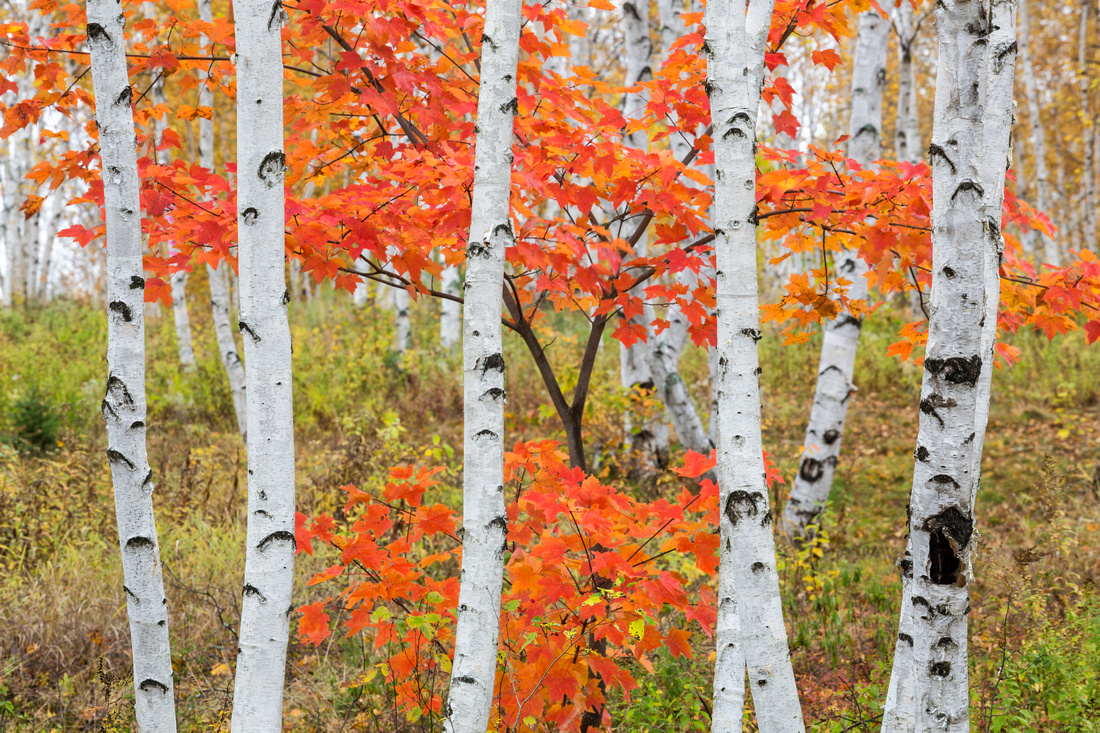
 Overcast conditions diffuse the light, often good conditions for saturating colours, as in this birch grove in Kivi Park.
Overcast conditions diffuse the light, often good conditions for saturating colours, as in this birch grove in Kivi Park.
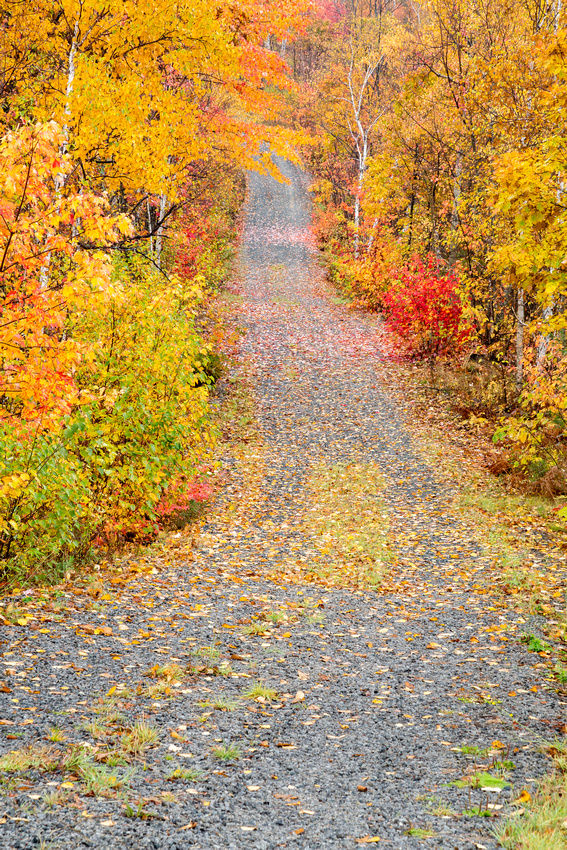

Similar overcast light saturates the colours of the leaves along this small laneway.
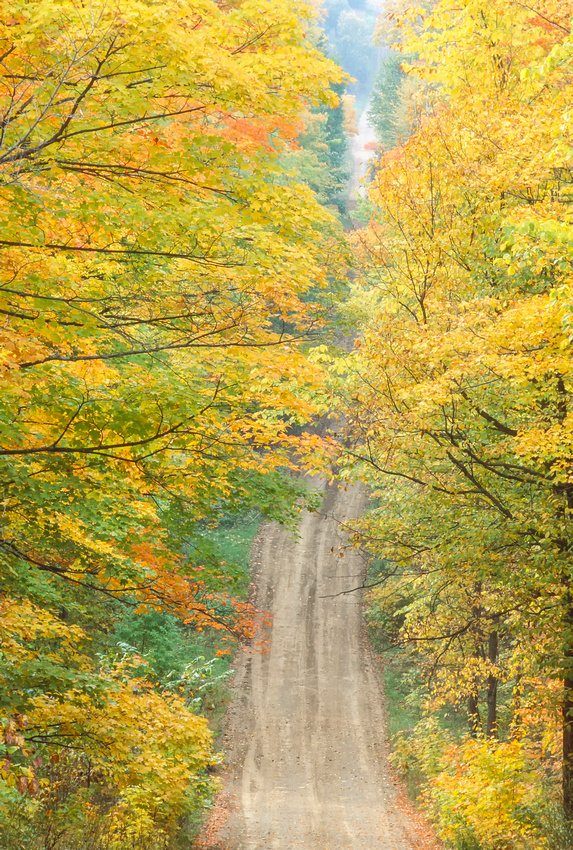

In similar conditions, look for higher points of view for larger landscape images, as in this country road on Manitoulin Island, or in the following photo of the forest in Killarney Provincial Park.
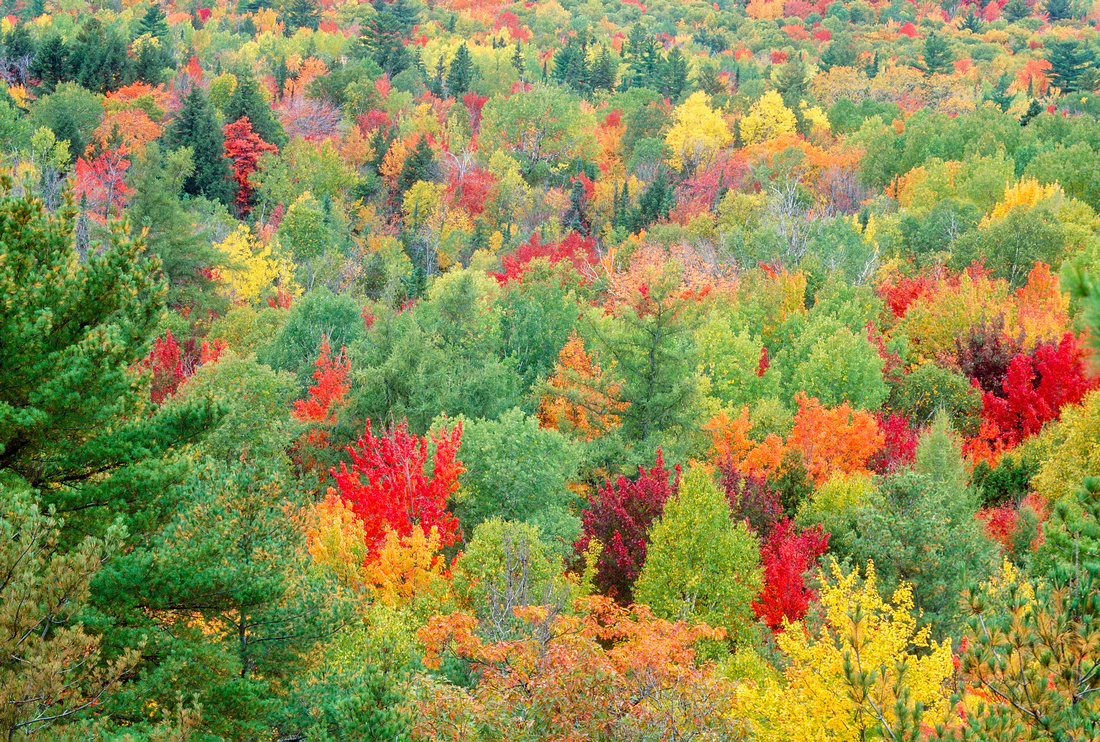

A bright sunny day is not a favourite time of mine for fall landscape photography.
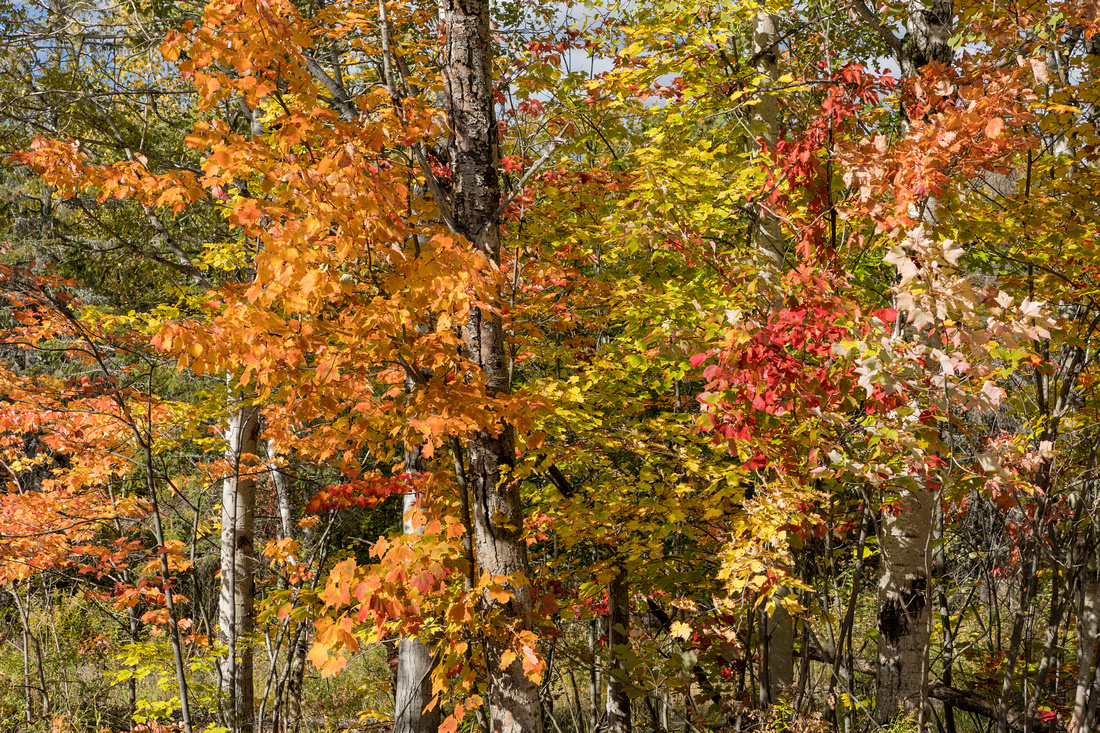
 This photo illustrates my disdain for these kinds of days. This front-lit scene might look good to one's naked eye, but if you make your photos under these conditions, you will be disappointed. The colours are dull and drab, and the harsh shadows provide too much contrast. I'm often derided when I disagree with those who claim what a beautiful day it is. It may be so, but not for photography.
This photo illustrates my disdain for these kinds of days. This front-lit scene might look good to one's naked eye, but if you make your photos under these conditions, you will be disappointed. The colours are dull and drab, and the harsh shadows provide too much contrast. I'm often derided when I disagree with those who claim what a beautiful day it is. It may be so, but not for photography.
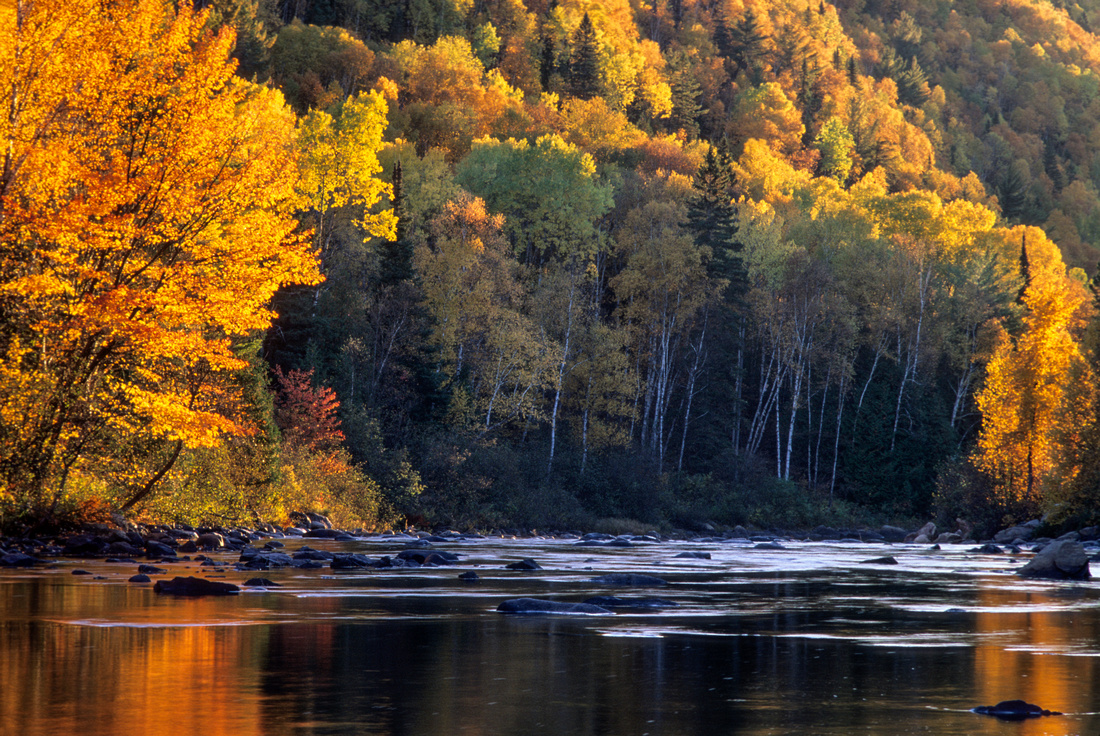
 But that is not always true. Dramatic side light here creates an epic photo on Algoma's Little White River north of Iron Bridge.
But that is not always true. Dramatic side light here creates an epic photo on Algoma's Little White River north of Iron Bridge.
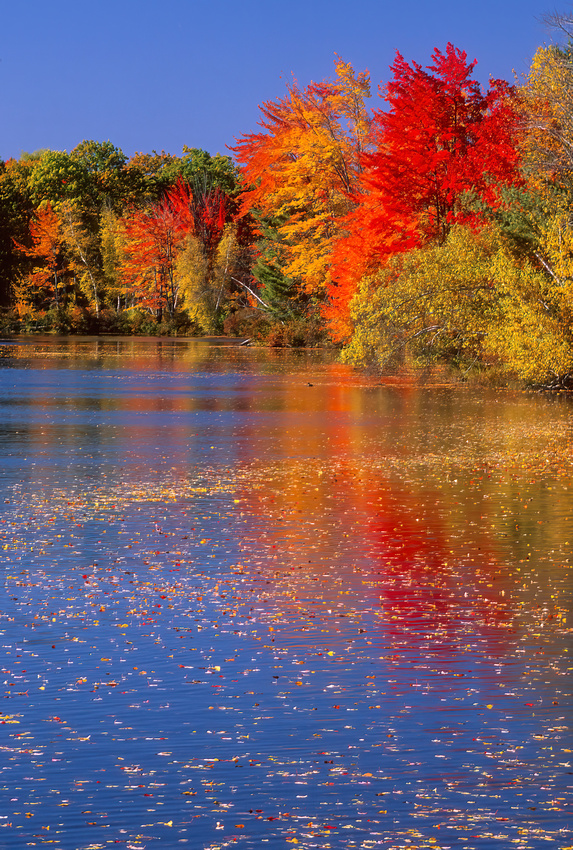

Great early morning side light, combined with a polarizing filter, can combat the effects of a bright sunny day, as in this photo of Pequawket Pond in Conway, New Hampshire.
Another technique is to look up and contrast the colours of the leaves against a blue sky. That's what I did to make this image near Coldwater, Ontario. Using a polarizer accentuates these contrasting colours.
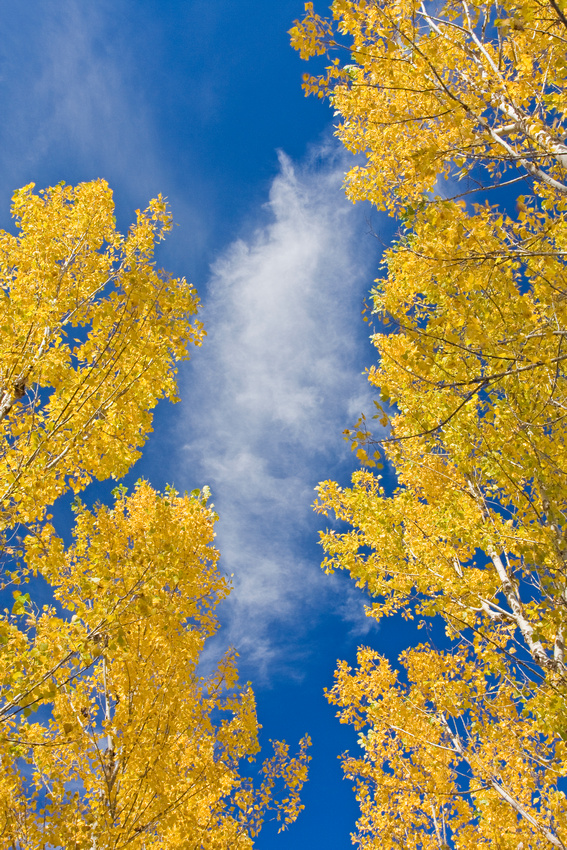

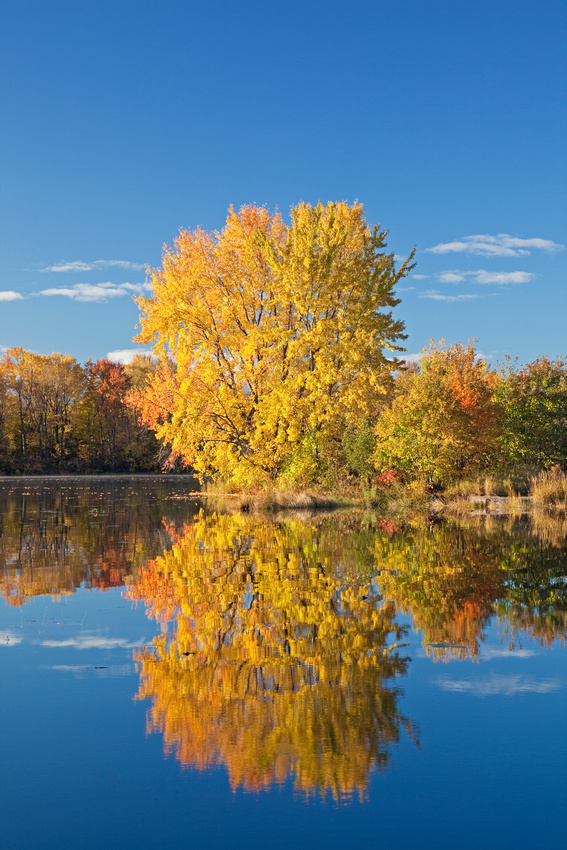

All these techniques come together in this photo of a maple tree on the Vermilion River; side light, contrasting colours (blue and yellow), a calm morning with great reflections, and the judicious use of a polarizing filter.
So get your camera, get out and enjoy the beauty of this short-lived season, and bring home some great memories.
September 14 - Photographing the Smaller Subjects
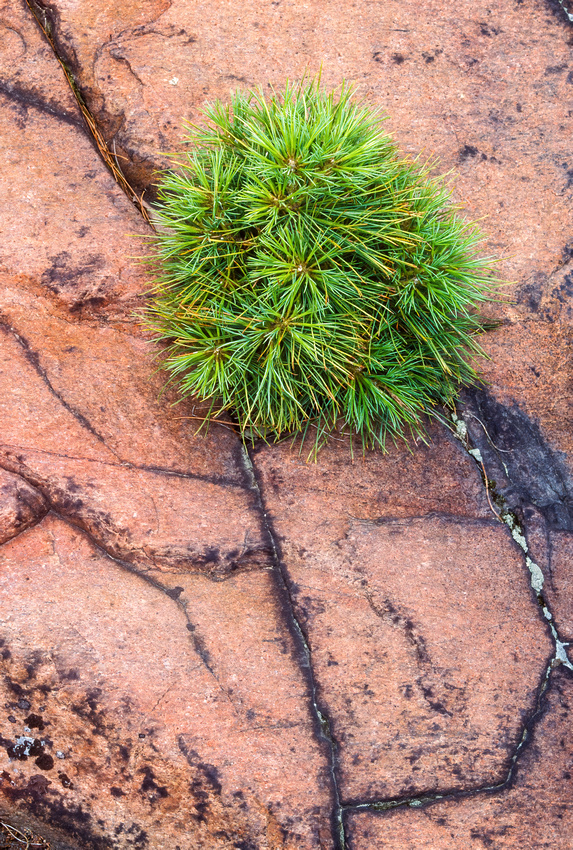

As photographers, we often first are attracted by the larger landscape. Our next reaction is to look for the intimate landscape, the smaller scenes within the grand view. After we have selected these scenes within the large scene, we then start looking at the details, as above in Killarney, or below in Sudbury's Bell Park.
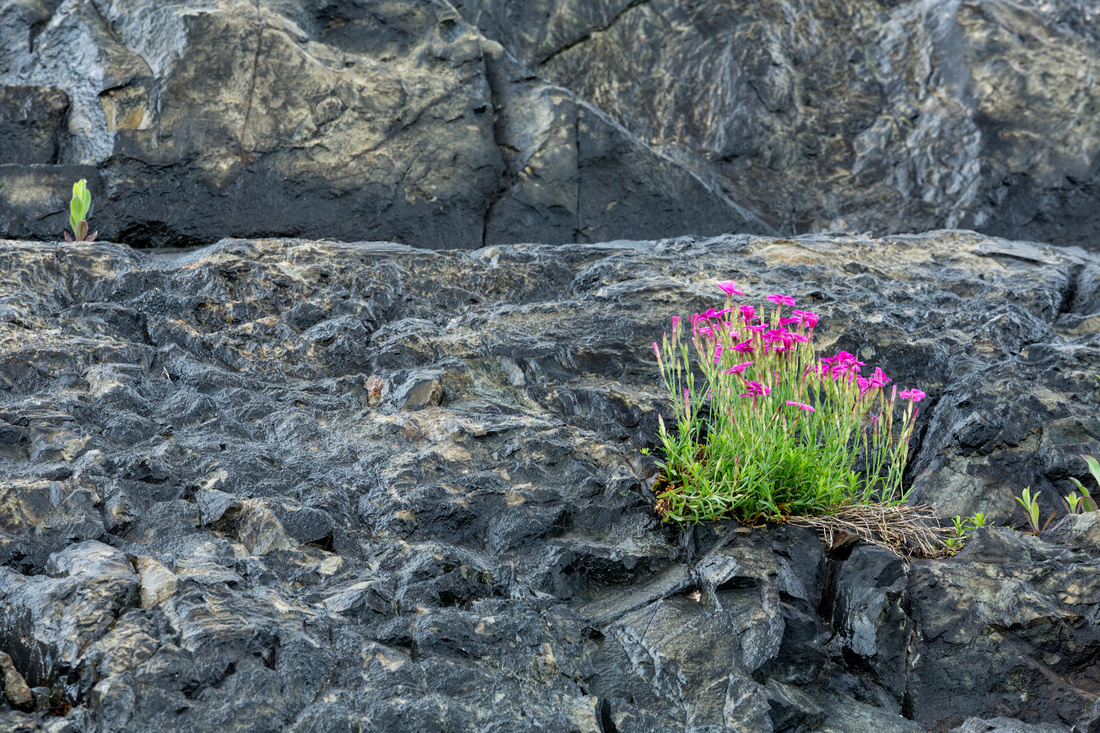
 Now we are into close-up photography. This is not macro photography, which is the reproduction of the subject at a 1:1 ratio, or life size.
Now we are into close-up photography. This is not macro photography, which is the reproduction of the subject at a 1:1 ratio, or life size.
For these more detailed images a good tripod is recommended. The closer you are to the subject the more camera movement can ruin your photo. As an alternative, good technique and one of the newer camera bodies with built-in image stabilization along with added stabilization in the lens, can produce sharp photos.
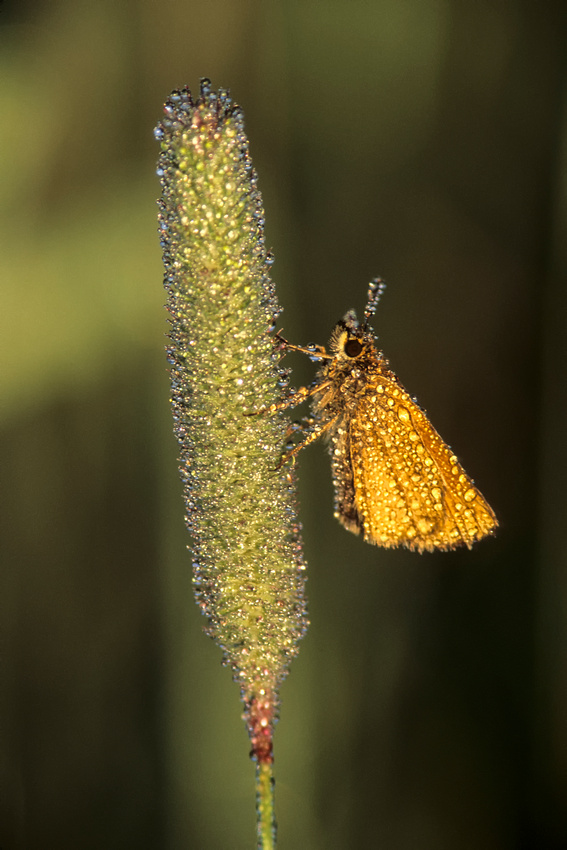

This photo I made in the field across the road from my house. I set my camera on a sturdy tripod (in this case, a Gitzo carbon fibre) and lined up the skipper on the timothy so that it was parallel to the film plane, for maximum sharpness. Because the butterfly was back-lit, I used a reflector to shine light onto my subject. This attention to detail ensured an award-winning photo. My technique here required the use of a tripod.
On a trip to Churchill, Manitoba, I spent a long time photographing the orange lichens and the patterns on these rocks on the Hudson Bay shoreline.
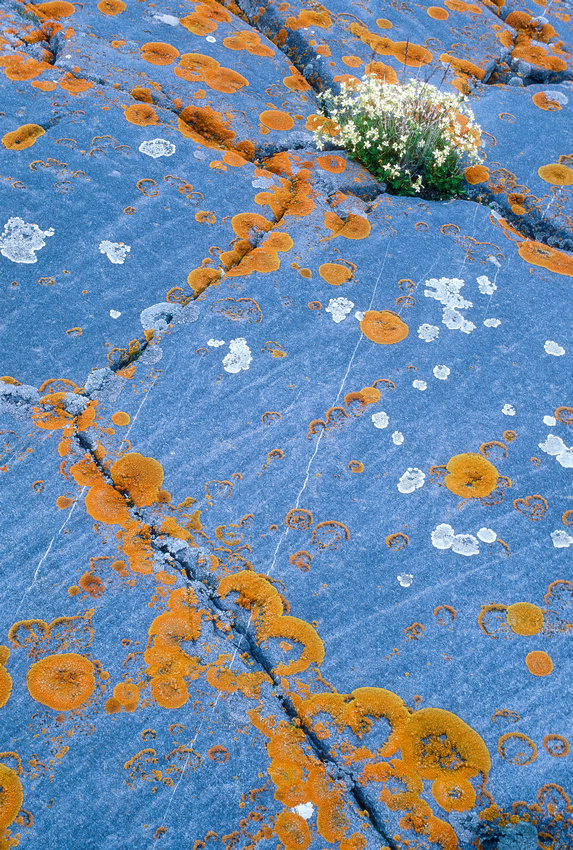

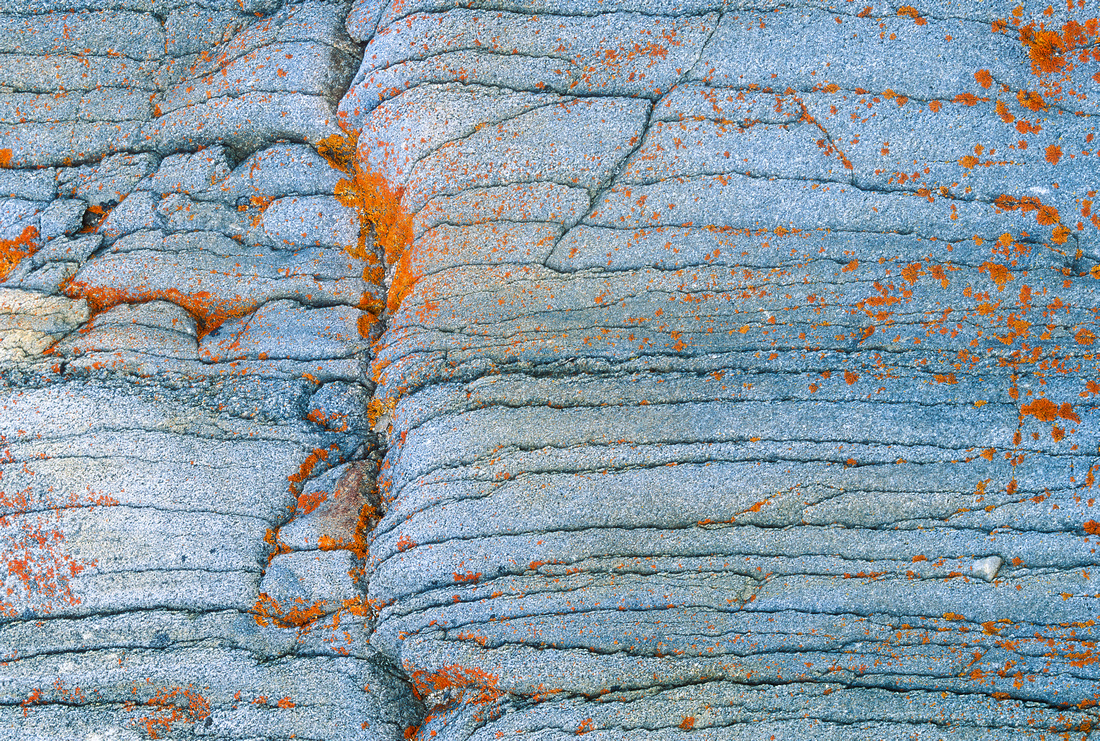

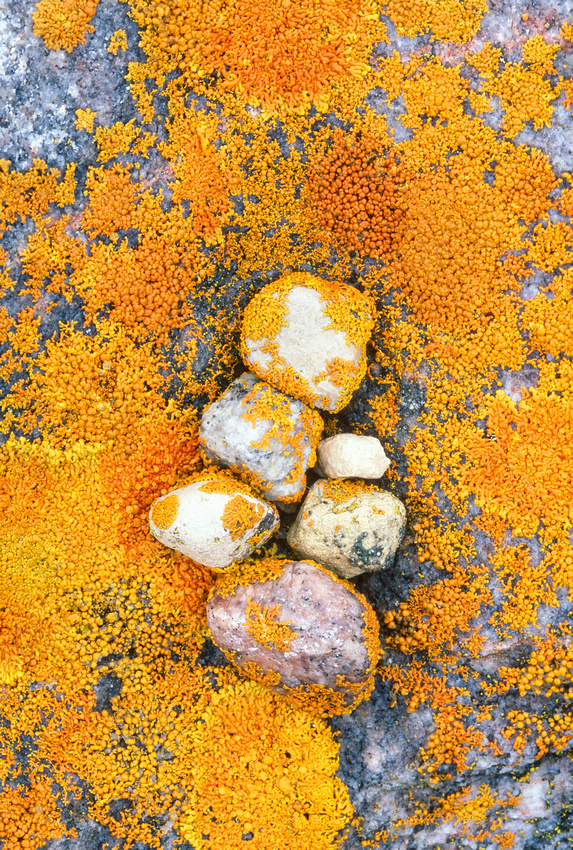

The lesson here: work the scene, shoot a variety compositions. When you have great subject matter, don't expect one shot will be the ideal.
Trees, or parts of, are another subject that can produce great detail images.
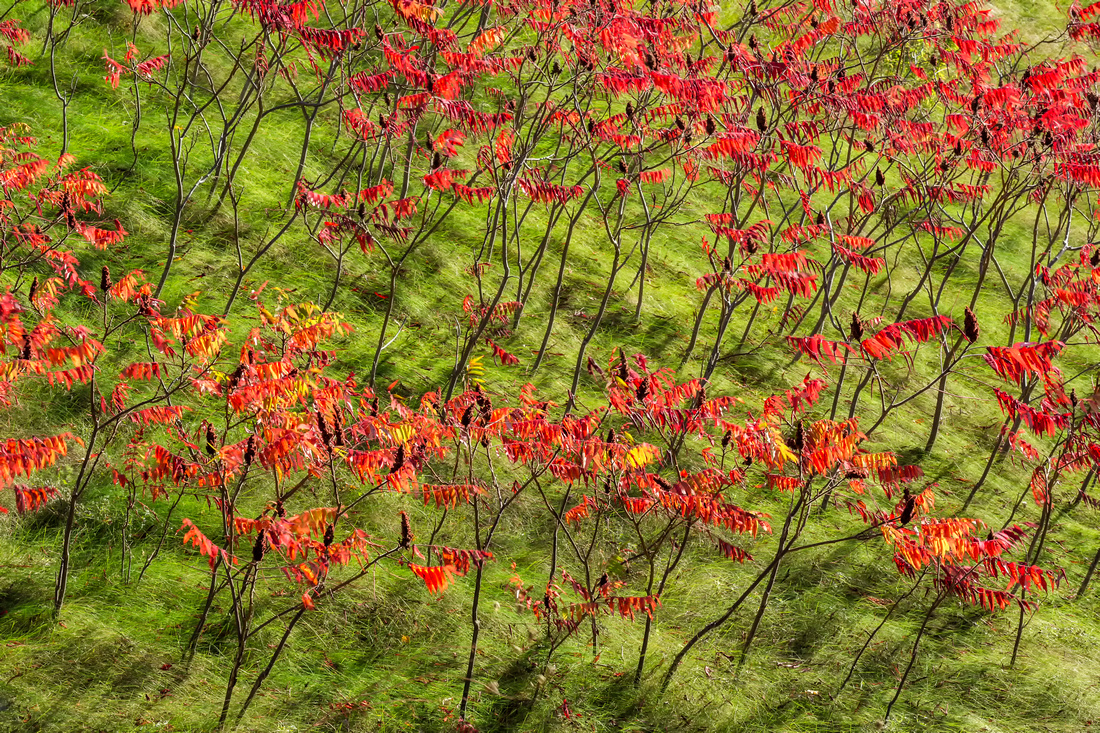
 Here is a close-up of sumac trees in the Hockley Valley. The comlementary colours, red and green, make the photo.
Here is a close-up of sumac trees in the Hockley Valley. The comlementary colours, red and green, make the photo.
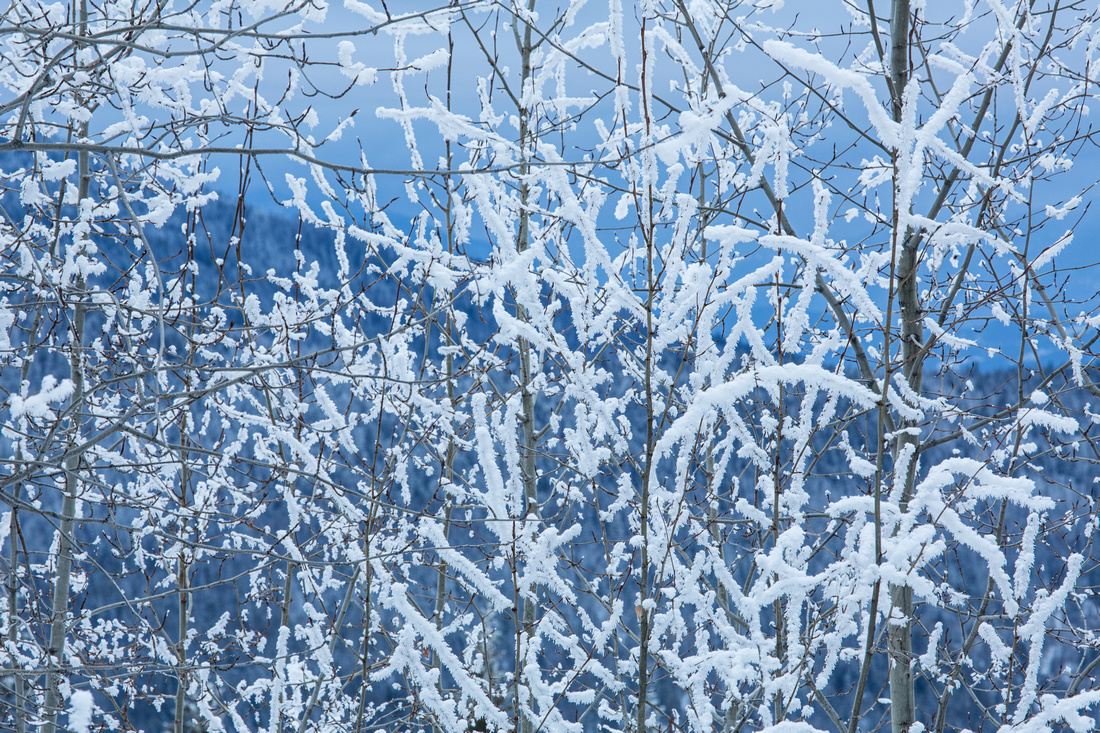

I photographed this close-up of snow on poplar saplings in the Okanagan Valley.
A good hint on how to find interesting close-up subjects: as you walk about, look down at your feet. Here you'll see a plethora of photo possibilities.
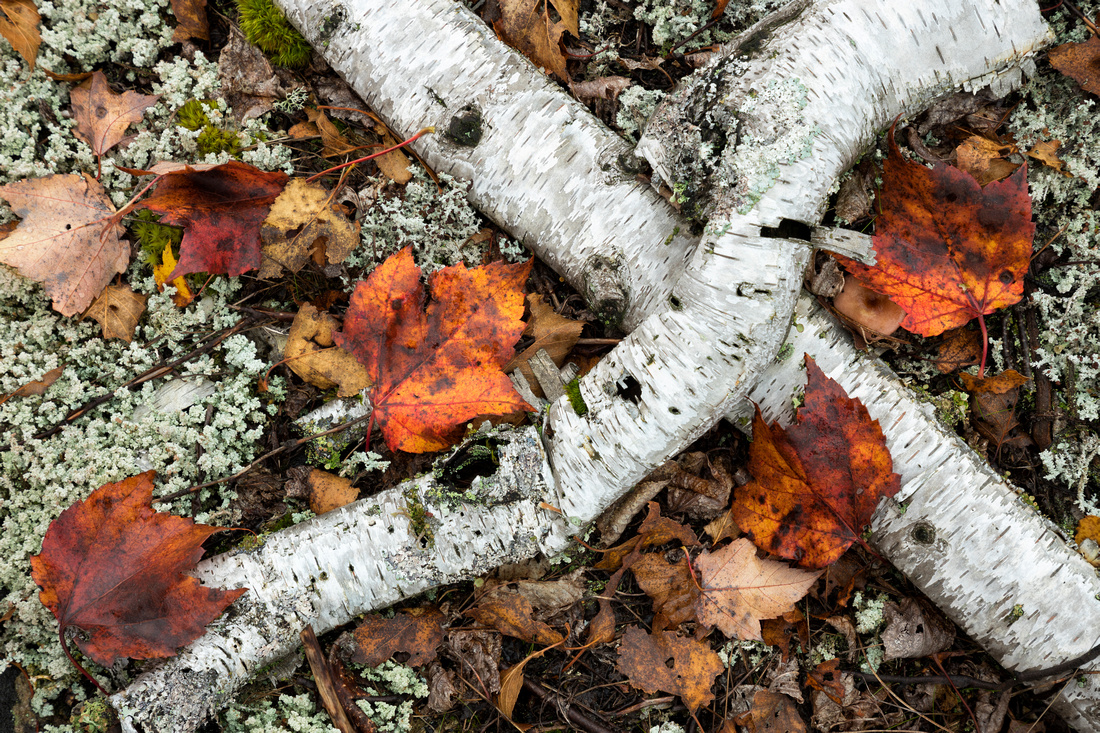
 I was wandering around on this rock outcrop searching for images over a small beaver pond when I happened to look down to see where I was stepping and saw these fallen birch limbs with autumn maple leaves around them. Of the several compositions I made, this was my favourite.
I was wandering around on this rock outcrop searching for images over a small beaver pond when I happened to look down to see where I was stepping and saw these fallen birch limbs with autumn maple leaves around them. Of the several compositions I made, this was my favourite.
Here are a few more examples of images by my feet.
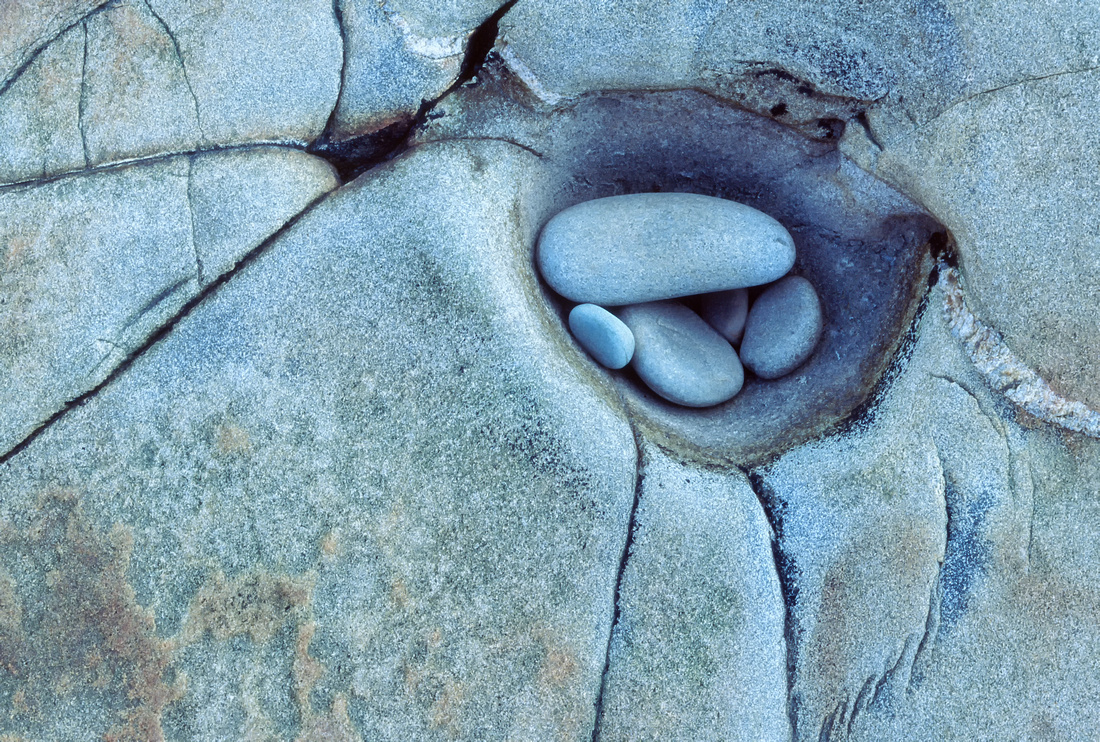

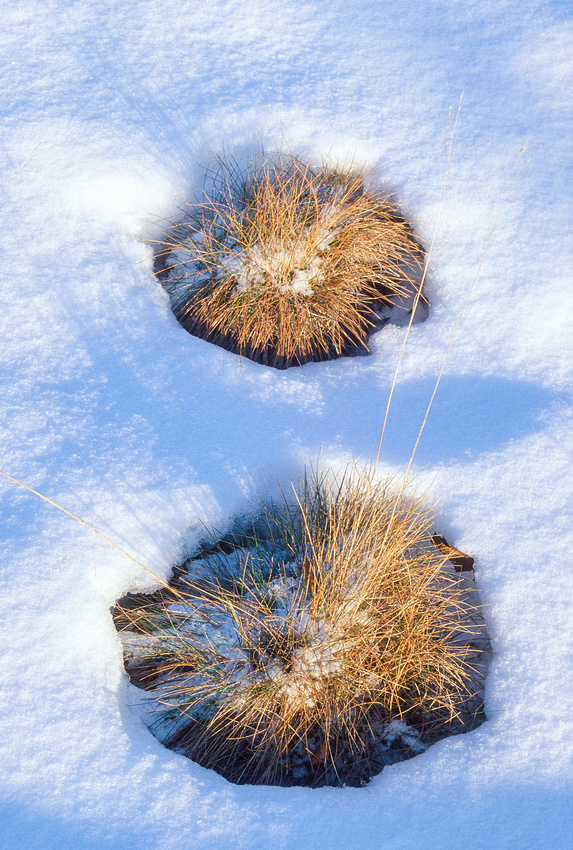

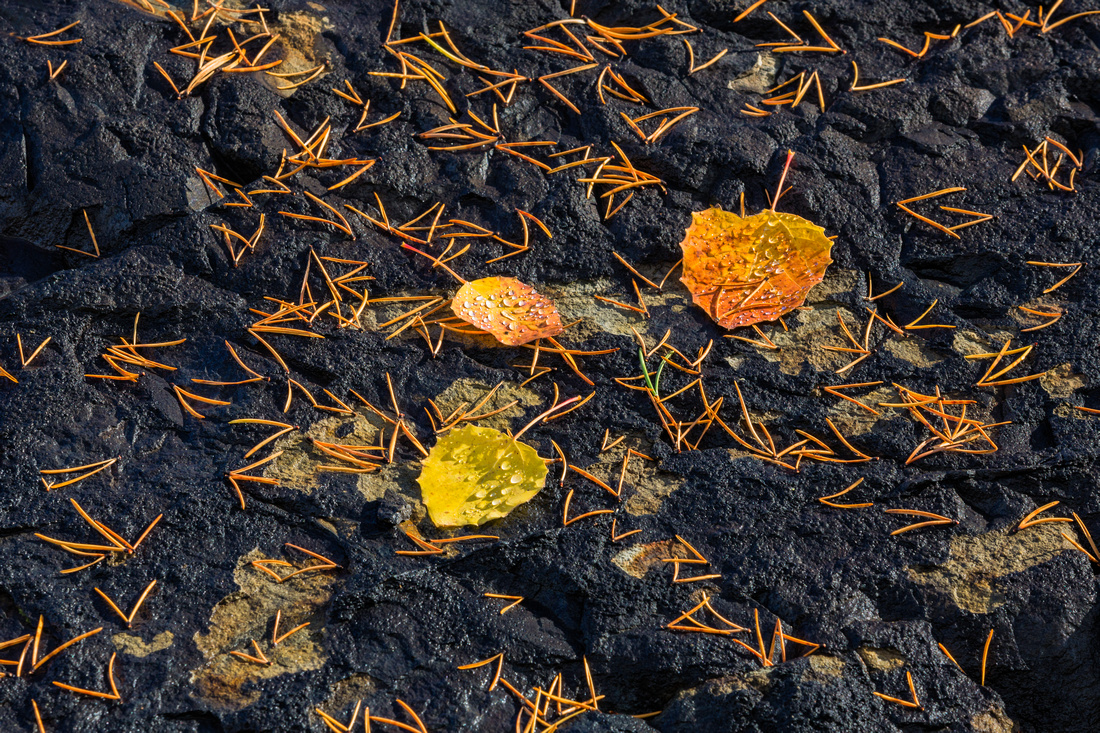

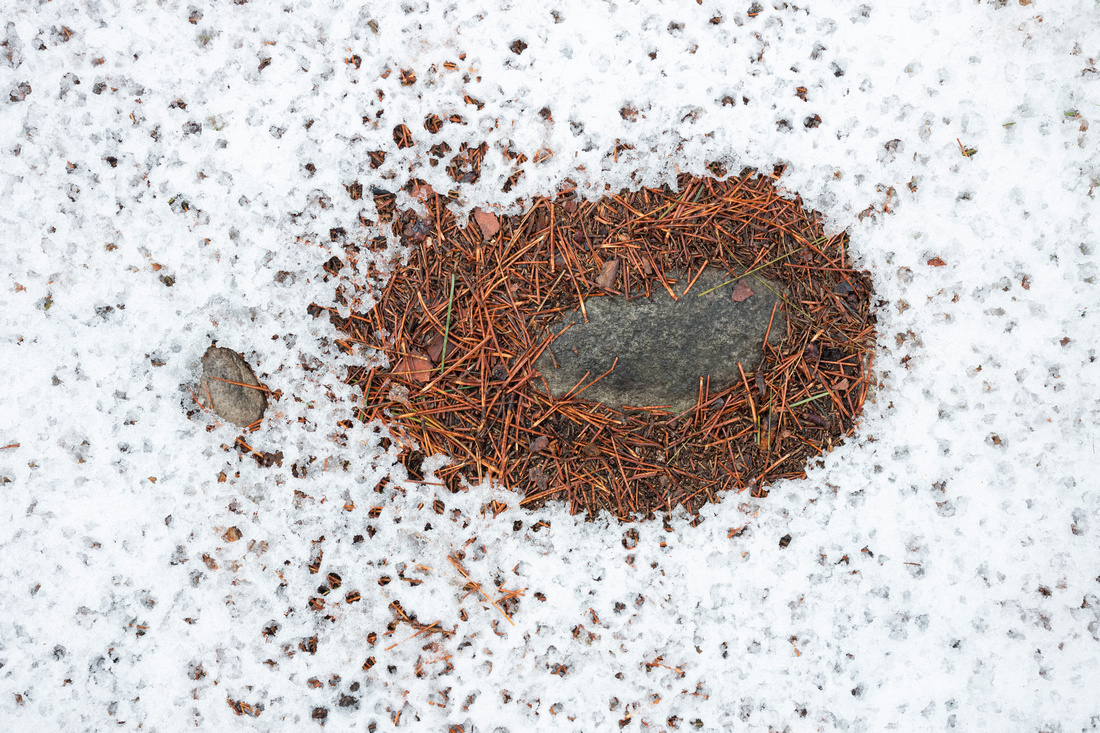
 While searching for images of bog laurel in a swamp near home, I felt that I'd struck out. The flowers were past their prime. But then I looked beyond the stalks and saw this pattern of fallen flower petals on the ground.
While searching for images of bog laurel in a swamp near home, I felt that I'd struck out. The flowers were past their prime. But then I looked beyond the stalks and saw this pattern of fallen flower petals on the ground.
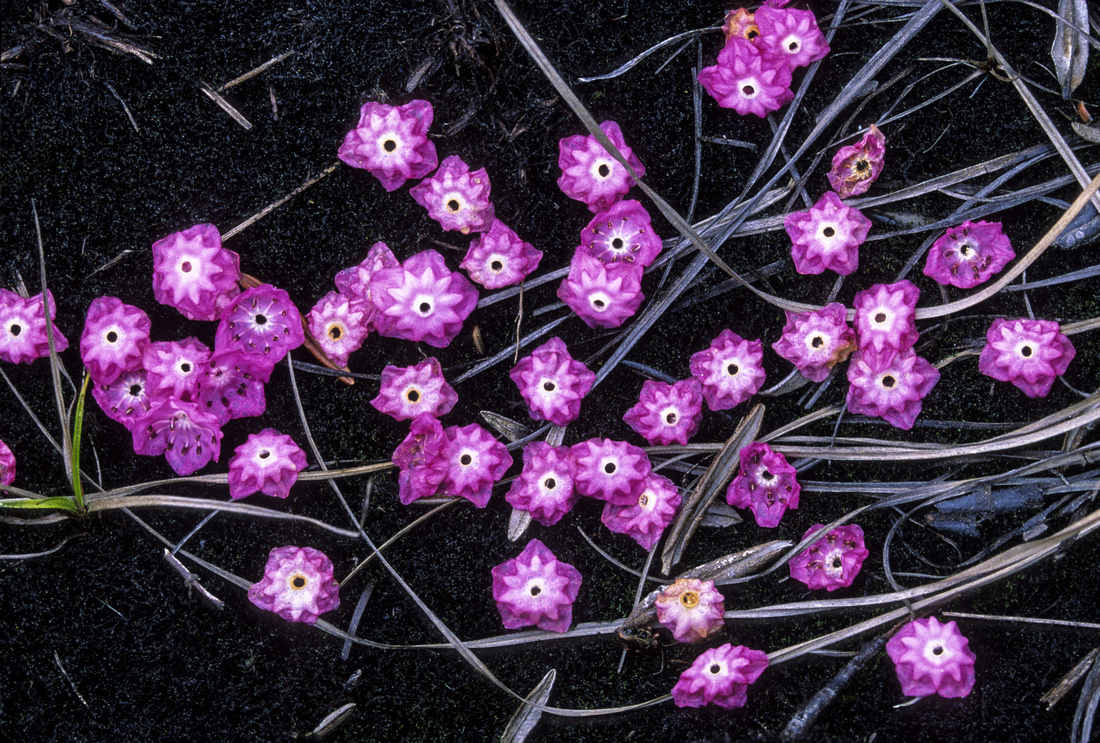

Make the best of the situation. There are always photo possibilities.
Rather than photographing the forest or the trees, again look down. There are photos to be found at the base of trees.
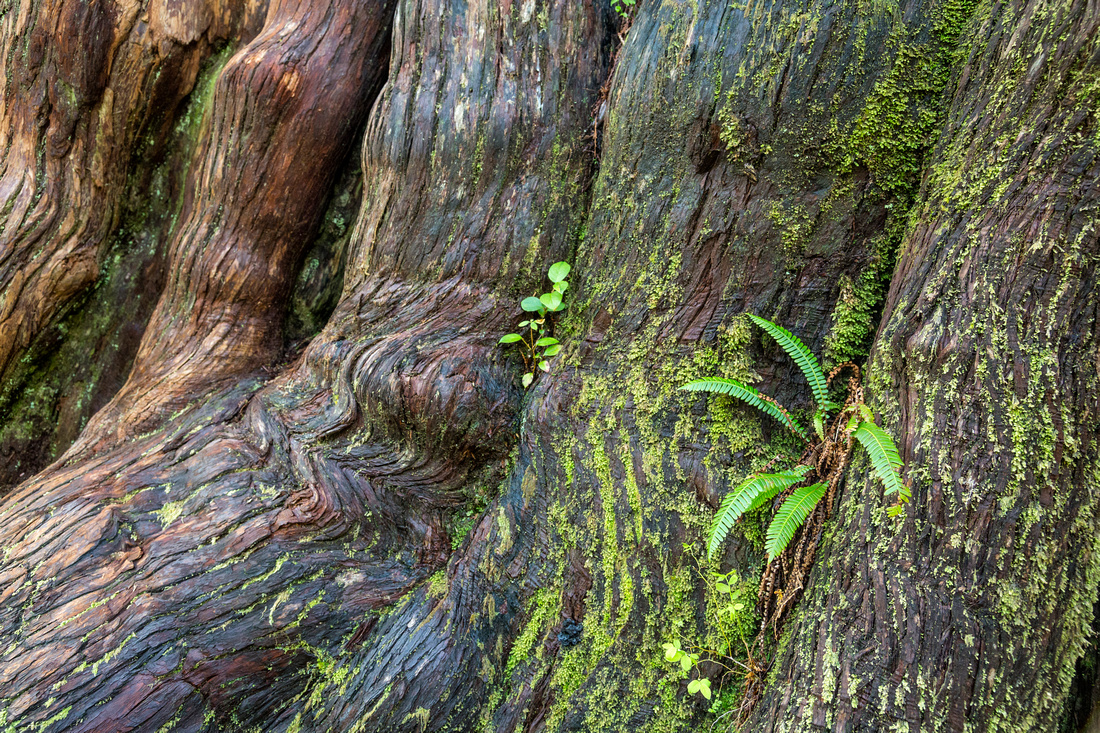
 This is a close-up of a giant cedar on Meares Island, on the west coast of Vancouver Island.
This is a close-up of a giant cedar on Meares Island, on the west coast of Vancouver Island.
This Siberian Squill I found in this hollow at the base of a tree in Muir Park, Toronto.
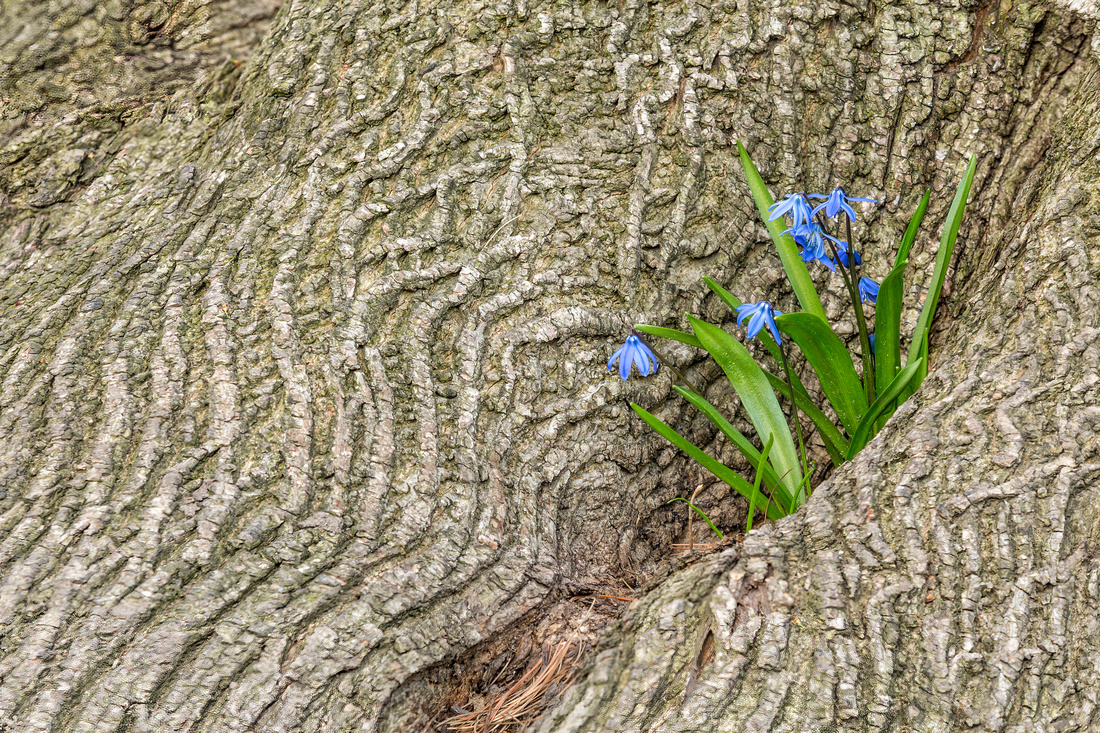

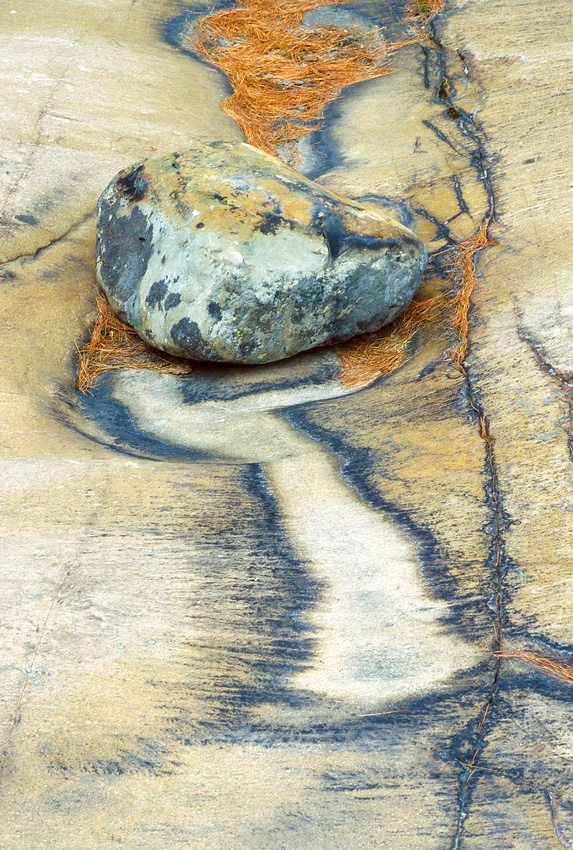

As you may have noticed, most of these close-up photo were taken in overcast lighting conditions (this along the Chikanishing Trail in Killarney Provincial Park). So when the skies do not cooperate, its time to look for the small details.
But that is not an absolute. This photo of rocks at low tide at Port Medway, Nova Scotia, was taken with the warm light at sunrise.
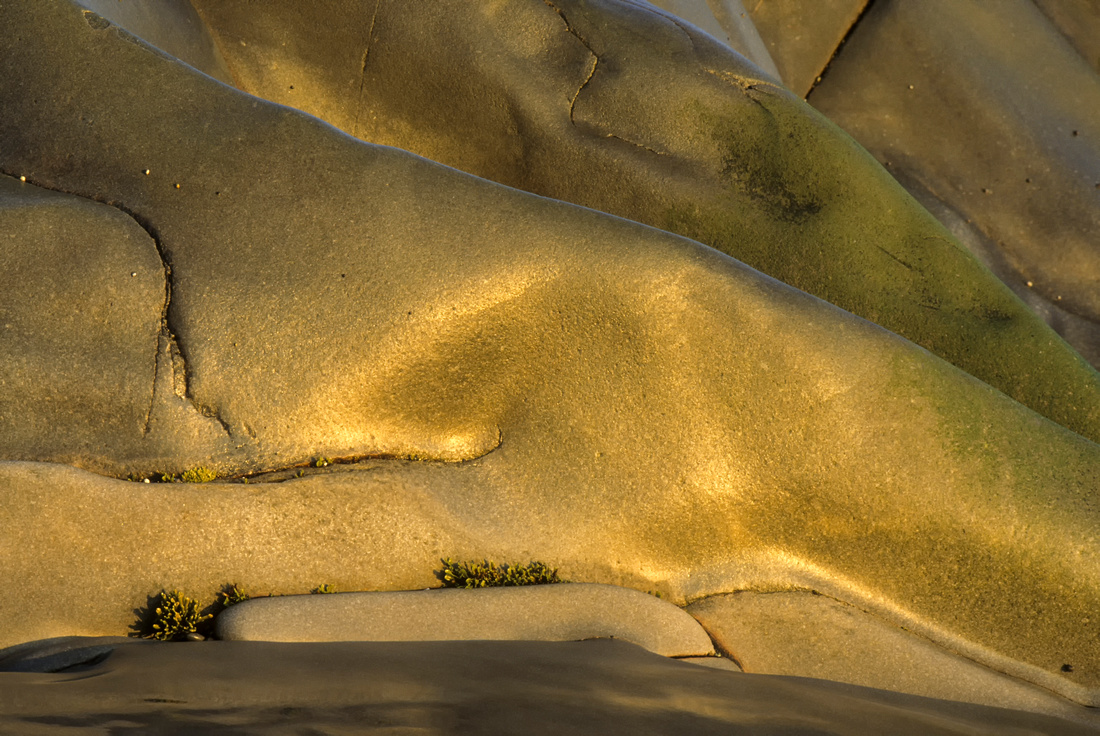
 For the nature photographer, there are many options. Aside from the epic landscapes, you can photograph the intimate landscapes and the close-up details of small subjects. There is always something to photograph. Don't zero in on the number of likes you might get on Instagram or other social media. Go out and photograph for yourself.
For the nature photographer, there are many options. Aside from the epic landscapes, you can photograph the intimate landscapes and the close-up details of small subjects. There is always something to photograph. Don't zero in on the number of likes you might get on Instagram or other social media. Go out and photograph for yourself.